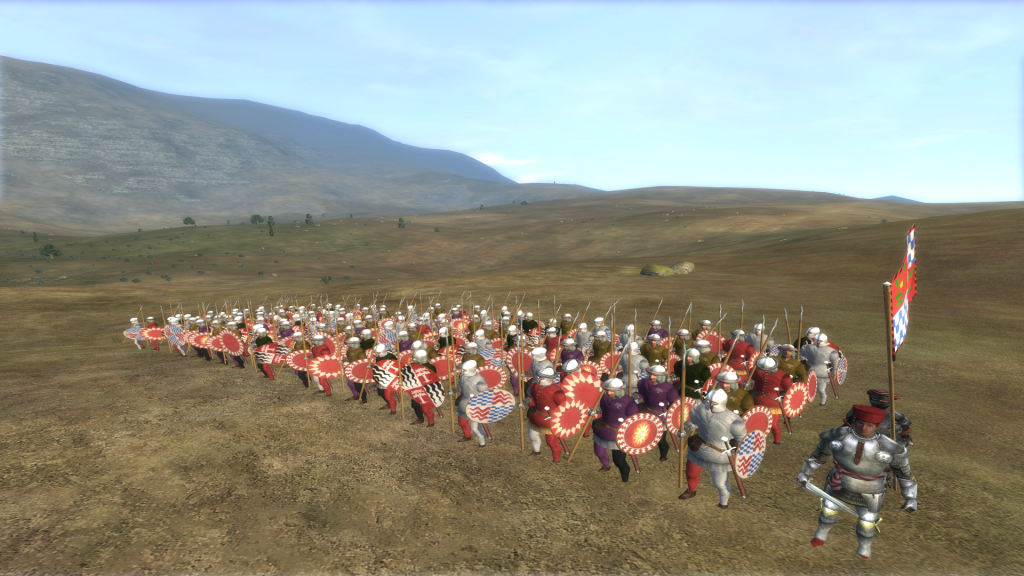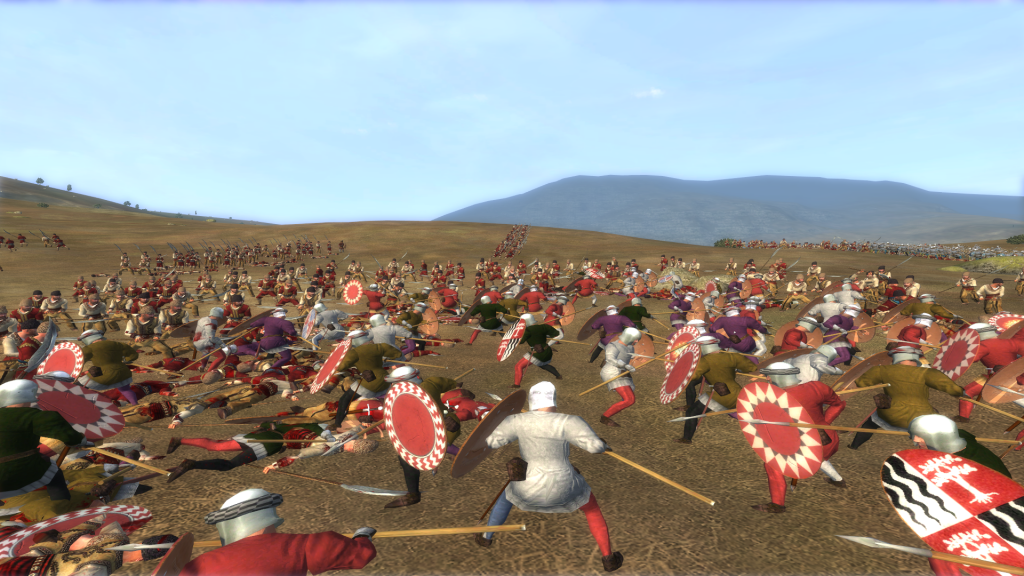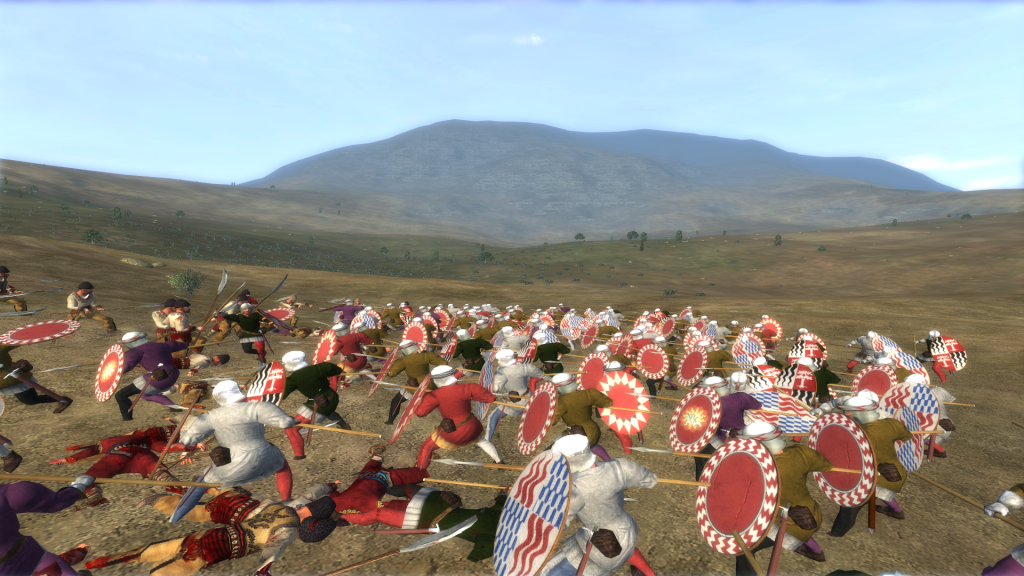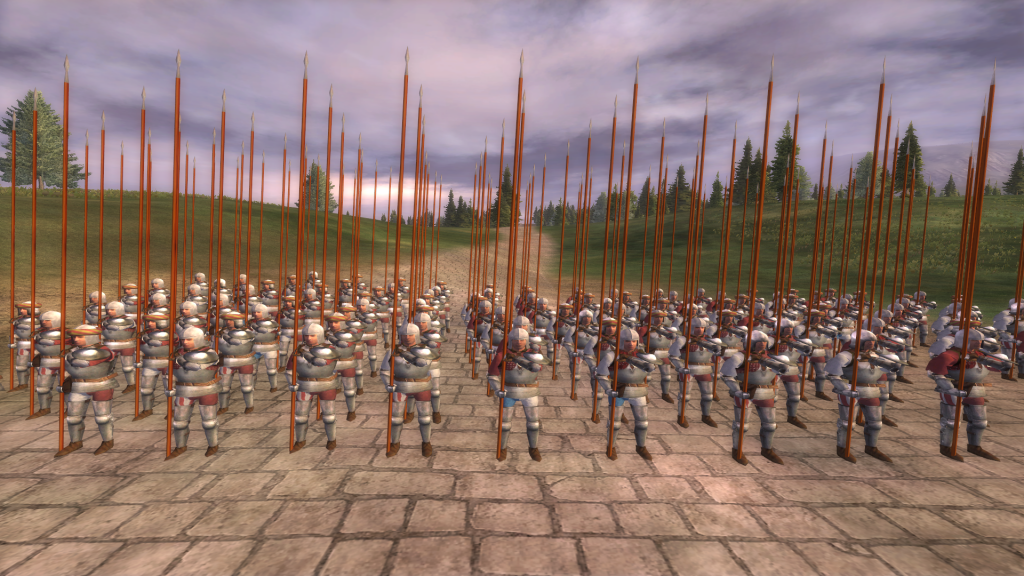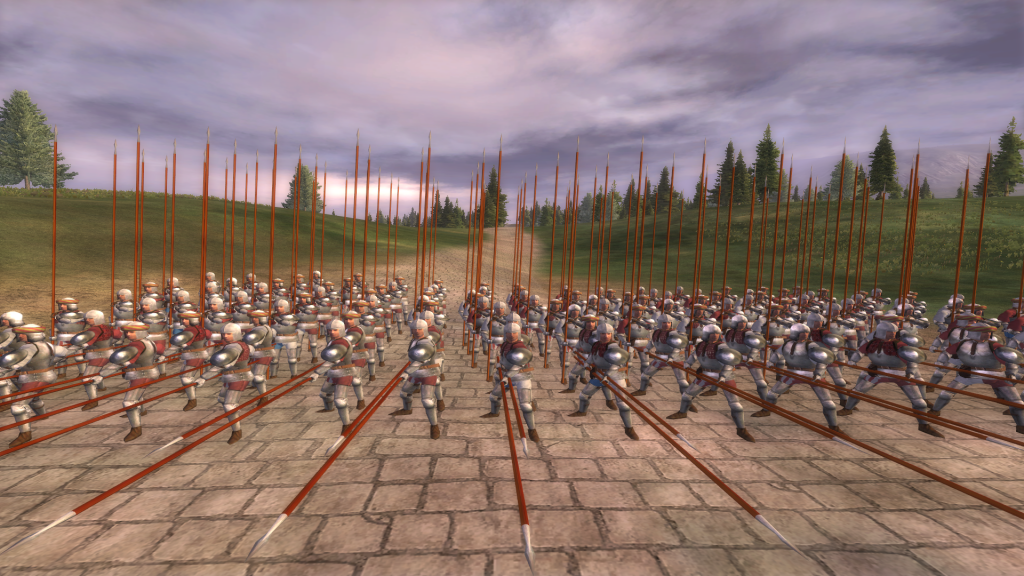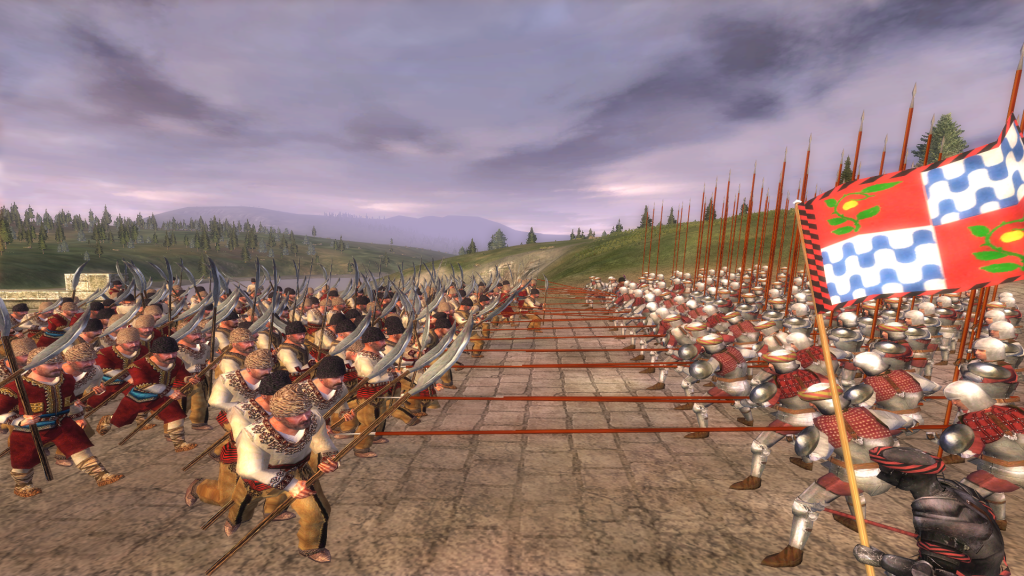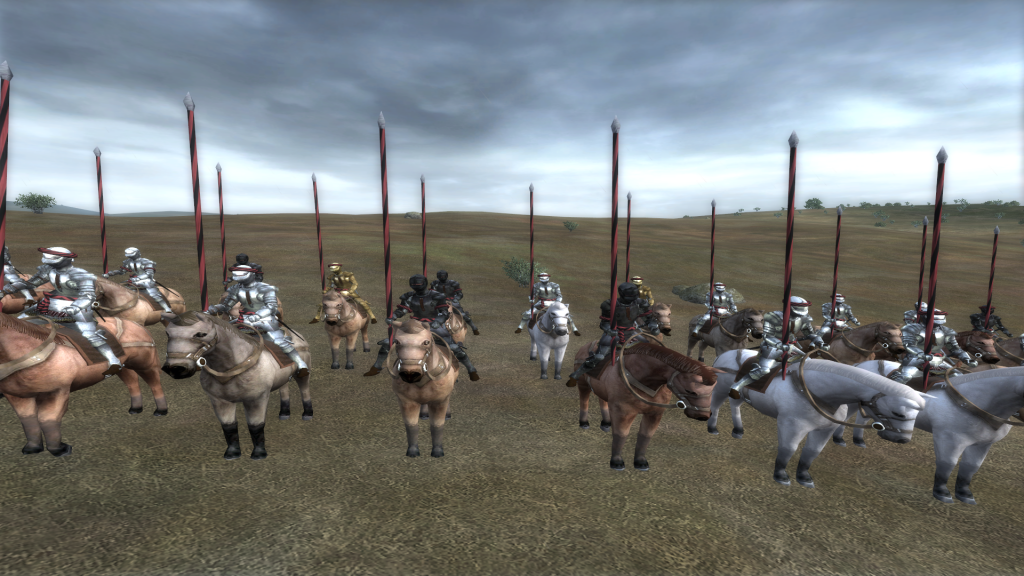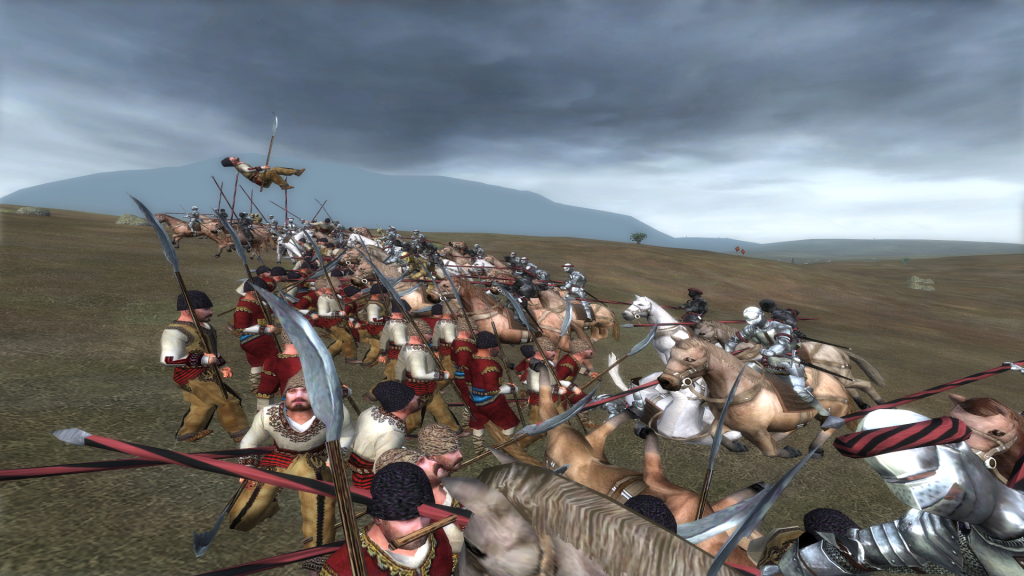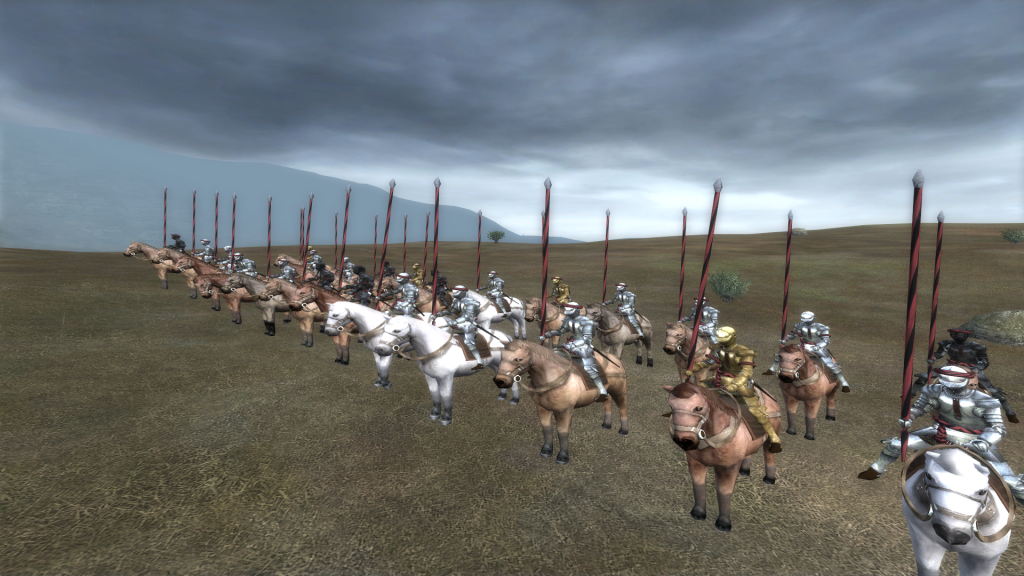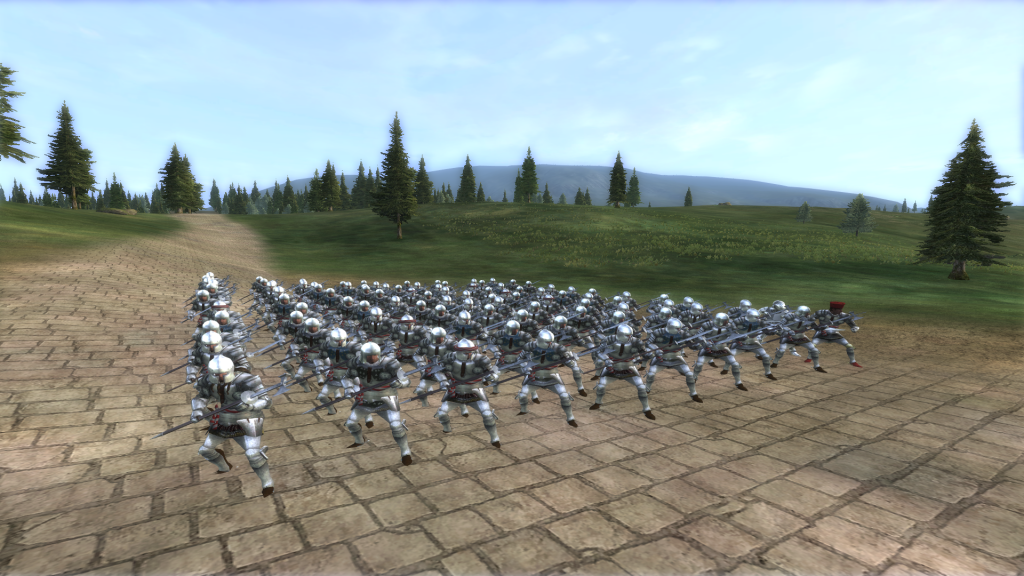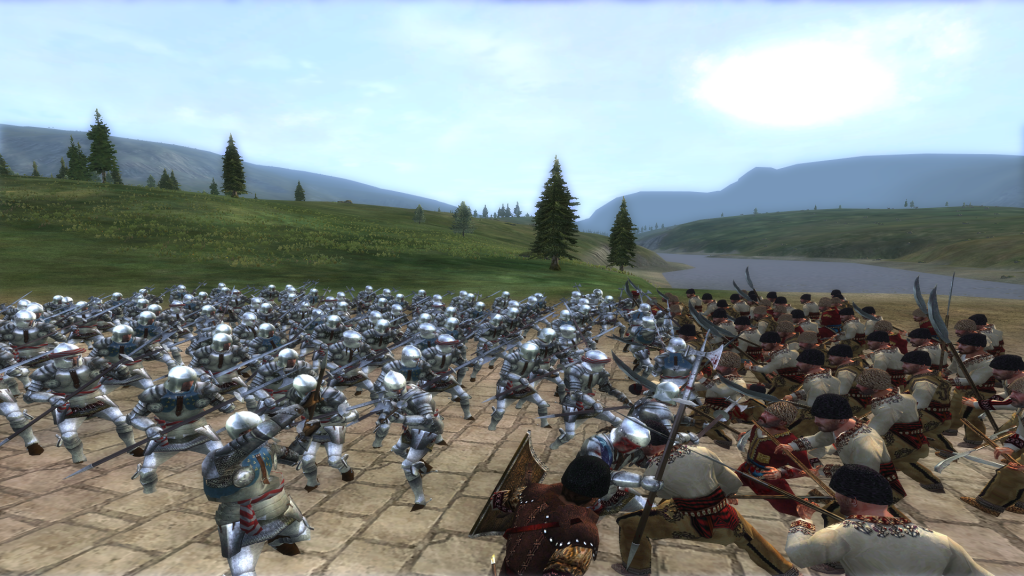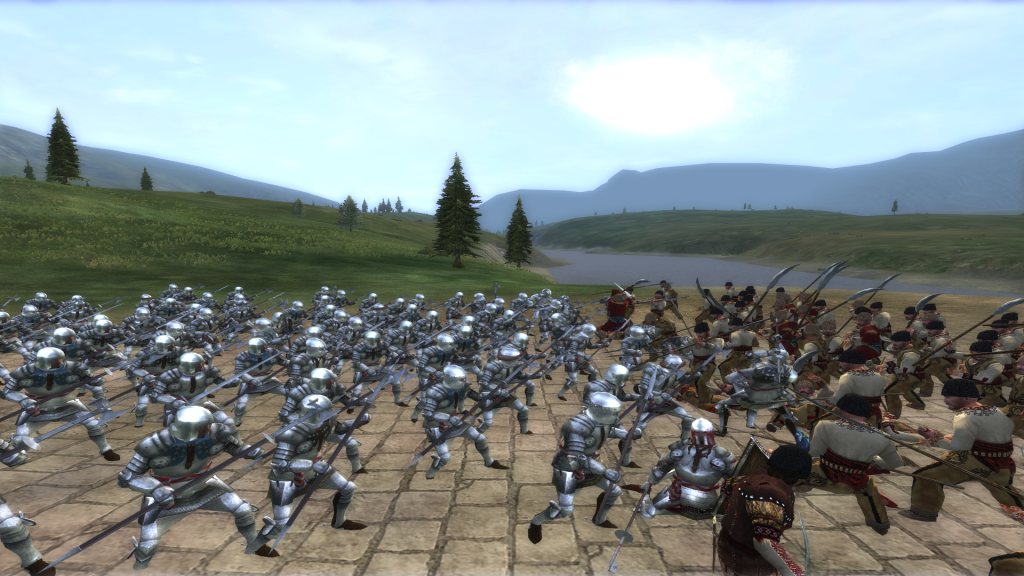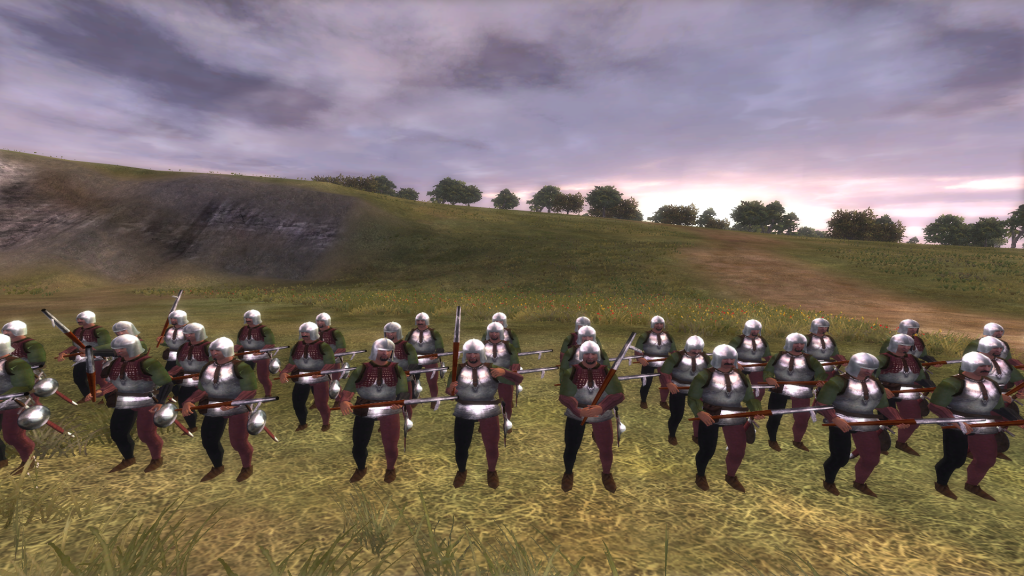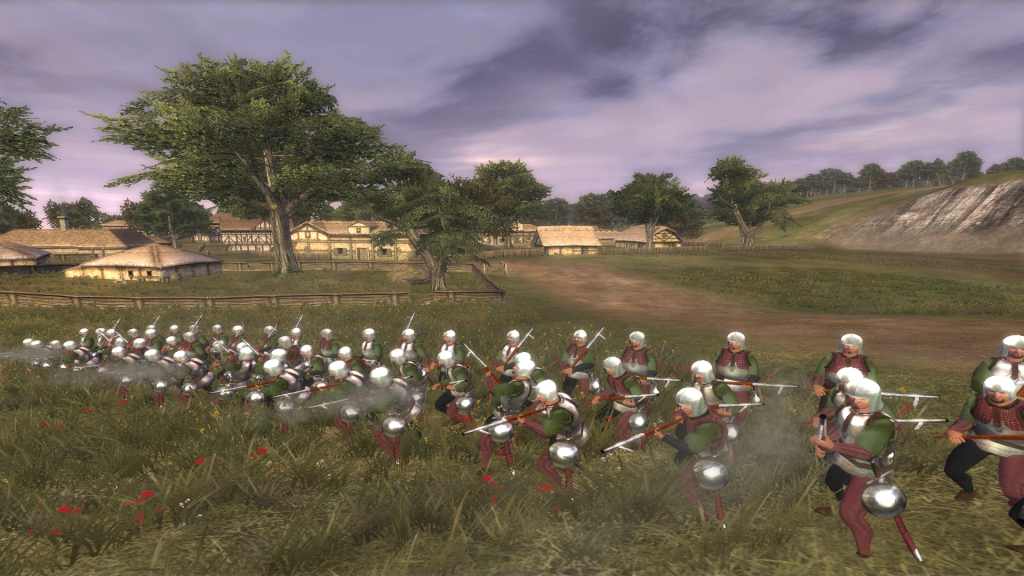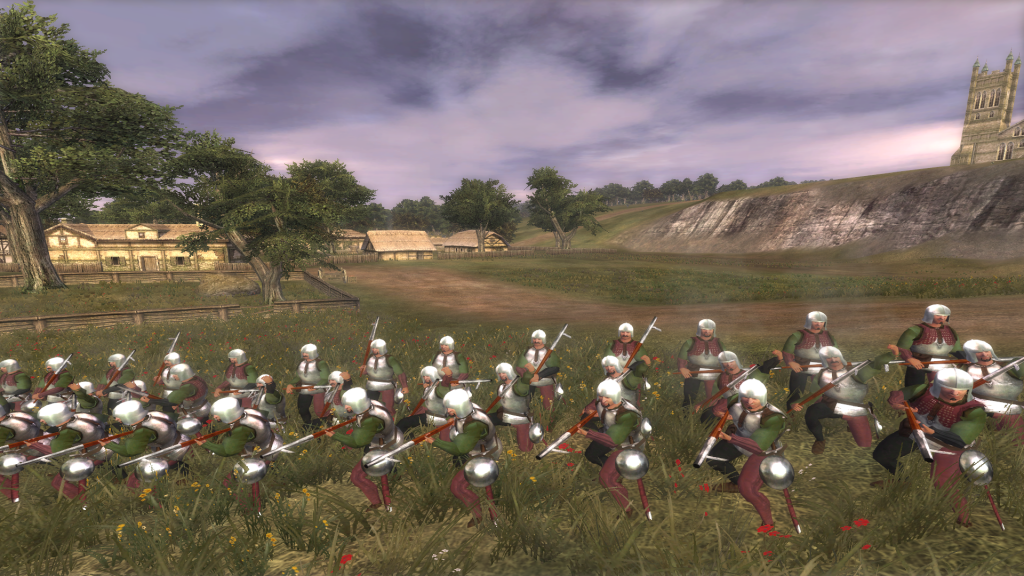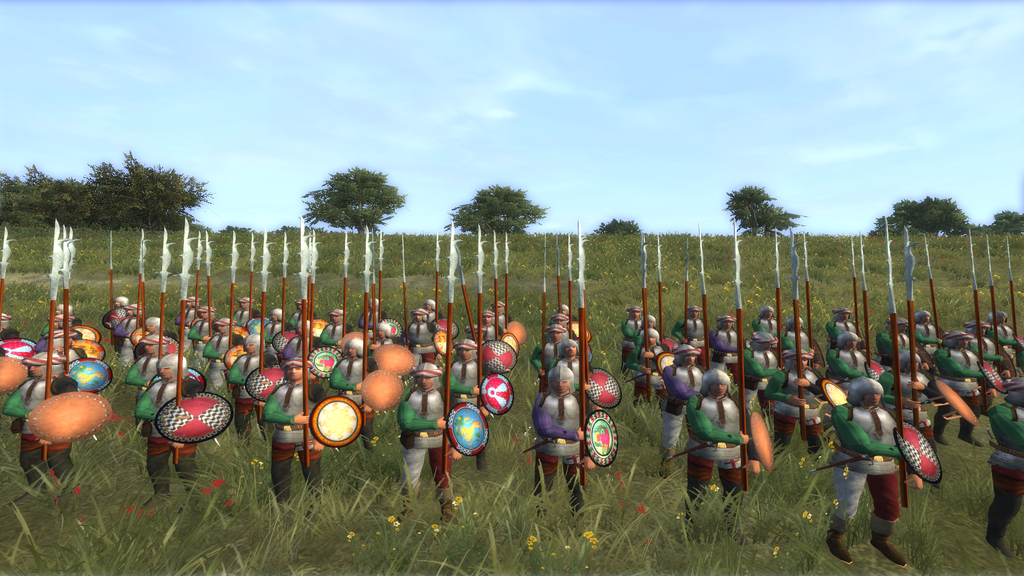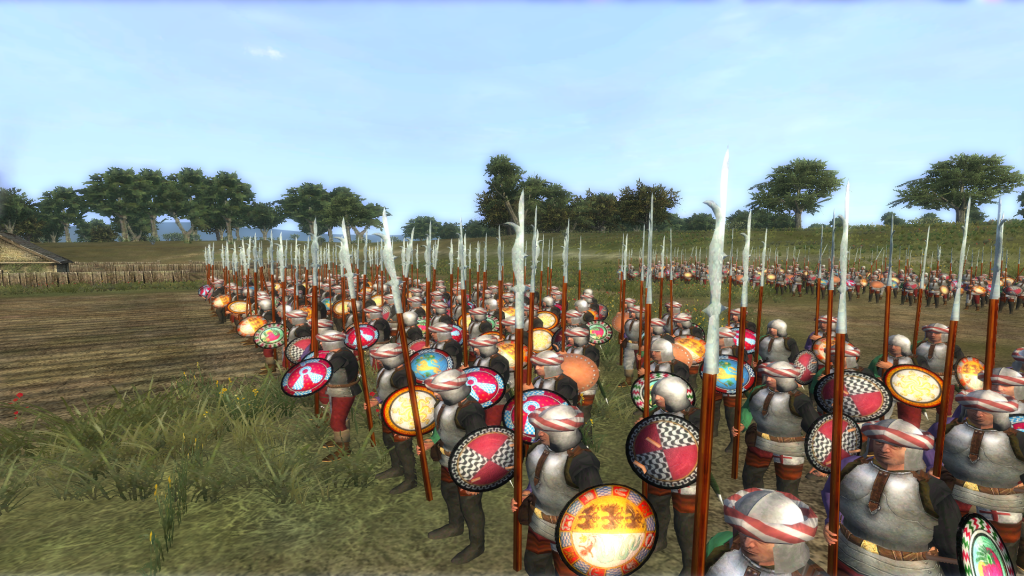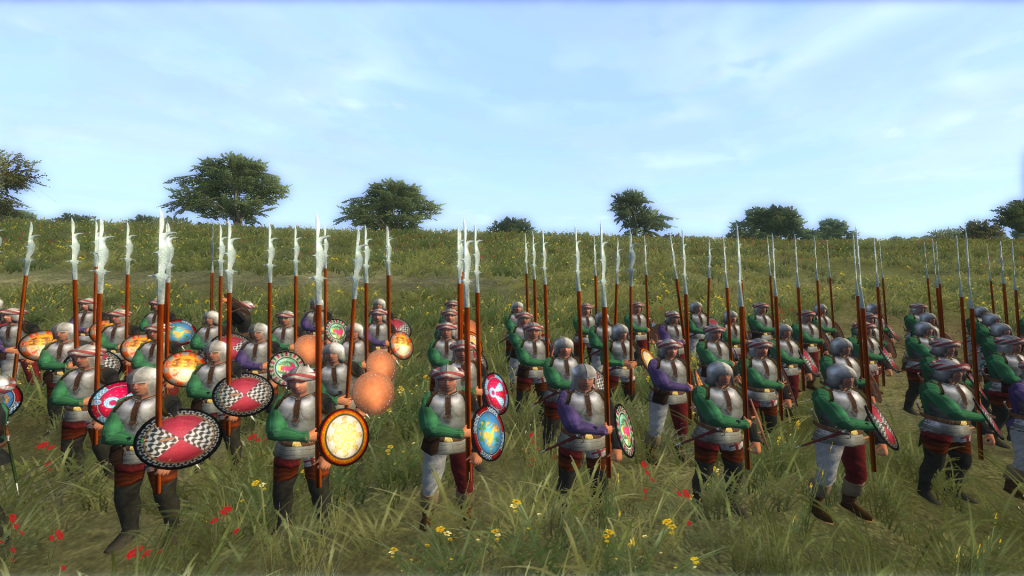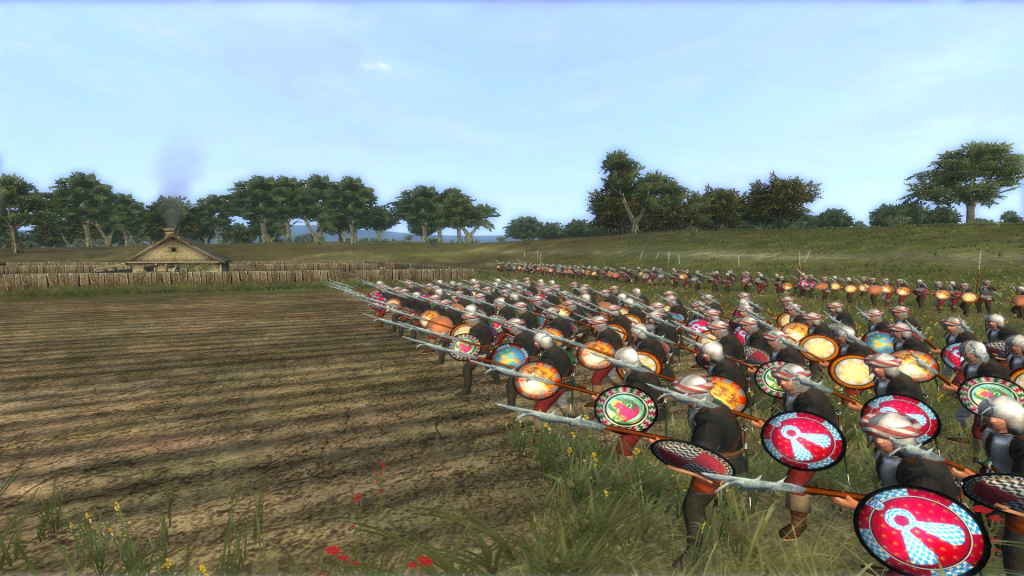 Team Proudly Presents
Team Proudly Presents
Sereněsima Repůblica Včneta
"Pax tibi Marce, evangelista meus. Hic requiescet corpus tuum."
(May Peace be with you, Mark, my evangelist. Here your body will rest.)
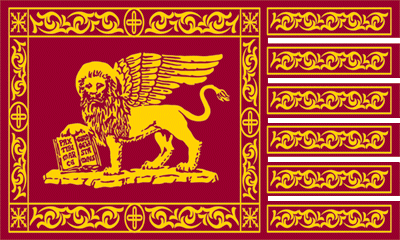
The Republic of Venice
Faction Overview
Historical Background
The city of Venice was founded as a collection of lagoon communities which joined together for mutual defence against the Lombards as the Byzantine Empire was losing its grip on Nothern Italy in the 7th century. The first Doge of Venice was Ursus who was elected by the people in the 8th century and was confirmed by the Emperor in Constantinopole. Other sources mention a certain Anafestus Paulicius as Doge at the end of the 7th century.
During the 8th century Venice was being contested between the Byzantine Empire and the emerging Carolingian Empire. At this time the Venetians started changing from a fishing town to a port of trade and merchant centre. The Venetians began building a large navy and expanding to islands beyond their lagoons. The city was torn between pro-Carolingian factions and pro-Byzantine factions and in 809 was besieged for 6 months by Pepin the Short. In 803 the Pax Nicephori was signed and the two emperors recognised Venetian de facto independence, while it remained nominally Byzantine in subservience. In 828 the city's prestige was raised by the acquisition of the claimed relics of St. Mark the Evangelist from Alexandria which were placed in the new basilica in the city. St.Mark thus became the patron saint of the city.
In the 9th century Venice also started expanding towards the sea with the construction of bridges, canals, bulwarks, fortifications, and stone buildings. The republic started expanding its military might by fighting Slavic and Saracen pirates as well as signing trade agreements with the Holy Roman Empire. In 841 the Republic sent a fleet of 60 galleys to assist the Byzantines in driving the Arabs from Crotone but failed. During the Dogeship of Pietro II Candiano the Istrian cities signed a treaty under which they accepted the Venetian economical supremacy which the first move towards the creation of the coastal empire in Dalmatia. Pietro took the title of 'Dux Veneticorum et Dalmaticorum' as a result of his victories over the Neretvanian pirates in 999 and over the Saracens besieging Bari in 1002-1003. During the reign of the emperor Basil II the Venetians obtained a favourable trade treaty with the Byzantines which ensured freedom of taxation and privileges.
By the year 1000 the Venetians had established firm control of the Adriatic and started their colonial empire. The Venetians intervened in the war between the Normans and the Byzantines. They sided with the Byzantines and as reward they received a bull declaring Venetian supremacy in the Adriatic coast and exemption from taxes in the whole empire. The Venetians used this exemption to accumlate large power and wealth with the spice and silk trade from the Levant and Egypt. They also obtained formal independence from the Byzantines as a result of the war, although it was not a military success.
During the First Crusade in 1096 the Venetians were at the forefront providing finance and fleets to transport the crusaders. After the Crusade 200 Venetian ships assisted in capturing coastel settlements in Syria. In 1110 Ordeliafo Faldoni the Doge of Venice personally commanded a fleet of 100 Venetian vessels to assist Baldwin I of Jerusalem to capture Sidon. In 1123 a treaty of alliance was established between the Kingdom of Jerusalem and the Republic of Venice. In exchange for military assistance the Venetians received privileges and their communities within the Kingdom in cities such as Jerusalem, Tyre and Sidon became virtually autonomous and amassed great power and influence.
In the 12th century the large shipyard known as the Arsenal was built. This would consitute the basis of Venetian seapower and be continually expanded over the centuries. Venice's expansion into Dalmatia brought them into collision with the Kingdom of Hungary and wars were fought between 1115 and 1119 and between 1124 and 1125 both ending with a Venetian victory. The main rivals in the Italian sea trade were the other naval republics of Genoa, Pisa and Amalfi. The republic built large fleets in the Arsenal and took control over the trade in the eastern Mediterranean. Due to their influence over Byzantine politics and significant trade rights the Venetians were not seen with good eyes by the locals. In 1182 an anti-Western riot took place in Constantinopole and the Venetians were the main victims. This event set the politics of the republic and the empire on a collision course. Another important event was the rebellion of the Dalmatian city of Zara in 1183 which put itself under the protection of the King of Hungary and the Papacy.
In 1198 Pope Innocent III called for a fourth crusade. The Venetian Doge Enrico Dandolo offered funds and transport to the crusade. In exchange for the funds the Venetians convinced the crusaders to attack and sack the city of Zara in 1202. After the fall of Zara the Venetians again diverted the crusade towards Constantinopole. The crusaders became involved in the power struggles between Isaac II Angelos and Alexios III Angelos and in 1203 started besieging the city. In 1204 Constantinopole fell and was sacked by the crusaders. The Venetians claimed much of the plunder from the city as payment. After the fall of Constantinopole the Empire was divided between the western crusaders. The Venetians were awarded strategic islands in the Aegean Sea including the islands of Crete, Naxos and Euboea. The Venetian empire thus extended from Dalmatia all the way to the Mediteranean and Greece.
The greatest rival of the Republic of Venice in the sea trade was the other great Italian maritime state the Republic of Genoa. In 1256 the first war broke out due to a conflict in Acre between the two republics which was only settled by a truce in 1270. In 1294 war broke out again the Aegean, the Bosphorus and Galata. The Genoese won the Battle of Curzola in 1298 which led to the signing of an 'eternal peace' in 1299 between the republics. The Venetian-Genoese conflict also sparked a war between the Venetians and the Byzantines between 1294 and 1302.
In the beginning of the 14th century, as the Venetians look towards expanding their colonial possessions the threat comes from the encroaching power of the Hungarians which are encouraging the various Dalmatian cities to break from Venetian influence.
Current situation
Originating as a small settlement in a swampy lagoon The Republic of Venice is now a large colonial empire spanning from North Italy to the Mediteranean and Greece. In the terra firma the Republic shares borders to the West with small Italian city states and further on lies the powerful city of Milan. To the South lies the lands of the Papal State which can prove a valuable ally but also can be a hinderance if their interests do not coincide with that of the republic. Any doge should ensure that good relations are maintained with the Pope as his support may be needed for further expansionist endeavours. To the East the lies the Duchy of Austria, the Austrians are part of the Holy Roman Empire and have ancient interests in Northern Italy. If the Austrians control the imperial seat they may prove a powerful enemy and as such a close watch and good relations should be maintained. To the South-East lies the client state of the Republic of Ragusa. The Ragusans have long harboured independent feelings and oscilated between Venetian and Byzantine overlords. Venice should ensure that the Ragusans are kept under heel and any independent moves should be punished severely. The Ragusan trade should work in the favour of Venice and its interests should be alligned. Further East to Dalmatia lies the mighty Kingdom of Hungary. The Hungarians have long coveted the same lands as Venice in Dalmatia and many wars have been fought over them. The Republic of Venice should ensure that powerful forces are stationed in Dalmatia to prevent any Hungarian transgression and allies such as the Austrians and the Bosnians should be sought to balance the threat.
Apart from the terra firma, Venice has its overseas posessions. As part of the spoils from the Fourth Crusade Venice established control over the island of Crete. Previously a Byzantine possession, Crete lies in the Mediteranean and is a vital trading hub to the Levant. The Hospitallers control the Christian stronghold in the East, however the island can easily be reached by the muslim pirates of Aydin or other beyliks from Anatolia. In Romania Venice has control of the island of Negroponte. The remnant of the Greek empire is a constant threat to the Venetian power even though they are severely weakened. The current civil war within the empire can be taken advantage of and may be an opportunity to expand Venetian influence and even restore the fallen Latin Empire. The constantly frankish states may pose a threat as well as the unruly Catalans that have taken hold of Athens and Neopatria. The main rival of Venice in the Mediteranean is the Republic of Genoa. The Genovese are allies with the Byzantines and have control of important trade routes. Any Venetian doge should ensure that these overseas colonies are protected and supplied by powerful fleets.
The goal of the Republic of Venice is to expand its colonial empire using its maritime power. The Venetians should take advantage of the weak Byzantines and their civil war and take over all the outposts and trade hubs in Romania. Next, the power of the Genovese should curtailed in the Mediteranean and all their outposts should be taken over by Venetian arms. By using its colonial empire to increase its wealth and power the Republic will be able to withstand its powerful enemis in the terra firma such as the Hungarians. Once the Republic has enough military strength it can pursue an expansion on land further in Dalmatia towards the land of the Croatians and even to the rich mines of Bosnia and the Balkans. The last step will be to challenge the other Italian states for hegemony over the rich pickings in Italy.
Government and Organisation
Historically, the Doge (coming from the latin Dux) was the Emperor of Constantinopole's representative in Venice. He was considered the ecclesiastical, the civil and the military leader of the republic as well as head of the legislature. The doge was elected for life by the republic's aristocracy and came from amongst the wealthiest and most affluent families. In the early years of the republic some doges attempted to establish herediatry passing of the title and as such laws were passed which forbade the association of family members to the office and also forbade the doge from naming a successor. The doge was elected by a committee which was chosen by lot from the members of the Great Council. The members of the committe would then vote on the doge from the list of candidates, this system ensured that individual families did not gather all the power in their hands. After the doge was chosen he was presented to the people of Venice and took the oath. The Doge was overseen by the Council of Ten and his circle of advisors, The Signoria. His main responsibility was in state ceremonial, the receiving of foreign dignitaries, and in marshalling the armed forces of Venice in times of crisis. Still the Doge was to be respected by all and while not above the law his words were listened to with credence and he held great influence over the affairs of state. The Doge resided in the ducal palace in Venice.
The supreme body of government in the Republic was the Serenissima Signoria. The Signoria was made of the Doge, as the head of the republic, the Minor Council composed of 6 advisers to the Doge and the 3 leaders of the Quarantia which was the supreme tribunal. The Signoria presided over the Senate, the Great Council and the Council of Ten and was the executive body of the republic.
The Council of Ten was created in 1310 as a temporary response to the revolt of Bajamonte Tiepolo against the Doge and had emergency powers to deal with the unrest. Originally it was only intended to exist for two months but it was continually voted until 1334 when it became a permanent body of the republic. The council was made up of 10 members elected by the Great Council who stayed in office for one year. The council was led by three capi which were elected monthly from amongst the members and were confied in the Ducal palace for the month they served to prevent corruption and bribery. The council had to meet only in the presence of the doge and the signoria. The council was tasked with maintaining the security of the republic and stopping corruption and preventing the government from being overthrown. It was responsbile with law enforcement, the management of the military and of the Venetian diplomatic corps.
The Minor Council was a constitutional body of the republic made of the 6 advisers of the Doge which represented each district (sestiere) of the city of Venice. The Minor Council was elected for 8 months and a councillor could not be re-elected until 2 years had passed. The council was a check on the power of the Doge who could not open his personal correspondence and discuss hearings without the presence of at least 4 Ducal councillors. The most senior councillor occupied the position of Vice-Doge in the absence of the Doge.
The Great Council was a sovereign assembly of the Republic of Venice which met in a large chamber in the Ducal Palace. Its primary duties were the election of the Council of Ten, election of the members of the Senate and the ratification of the Doge's selections to the Minor Council. The Great Council proposed many of the laws which were then debated in the Senate and had the power to fully mobilise the army and raise funds for war. Membership of the Great Council was established by hereditary right and was exclusive to the the most powerful patrician families of the Venetian nobility enroilled in the Golden Book.
The Senate, known as the Consiligio dei Pregadi, was formed in 1229 and was responsible with the legislation of the republic. The Senate debated and approved the laws that were proposed by the other bodies such as the Signoria or the Council of Ten. The members of the Senate numbered 120 and were elected by the Great Council.
The Collegio was the executive arm of the government which was responsible with the application of the laws passed by the other bodies. The college was made of 6 members chosen by the Doge: three ministers for war and three ministers for marine and finance. Each week the chairmanship of the body passed from one member to the other to ensure that no one person held power for too long and to avoid corruption and missaplication of laws.
The Council of Forty, known as the Quarantia, was the supreme court of the Venetian Republic. The members of the council were responsible with drafting criminal and fiscal laws and also dealt with legal matters. Three leaders of the Quarantia sat alongside the Doge and the Minor Council in the Signoria. The Quarantia acted as a prosecuting body and matters of criminal law but required the approval of the Signoria to approve the death penalty.
Trade and Finance
Situated at the far end of the Adriatic Sea, Venice gained large scale profits from trading in the middle European markets. Due to the fact that it was tied to the Byzantine Empire but neighbouring the Holy Roman Empire Venice gained far reaching privileges in both Empires. The Venetians bought, sold and transported goods from all corners of the world and developed a reputation as a trading nation. The Venetians overthrew their Adriatic and Italian neighbours to become a trading powerhouse. This trade is supported by a fleet of over 2,000 trade galleys which are state owned and are built in the Venetian Arsenal. Venice so developed a system of regular convoys with strong protective means, convoys went as far as London, Flanders, Constantinopole, Algeria, Syria and beyond.
The main Venetian industries included sea fishing, sea salt, glass making, shipbuilding and sugar plantations. The most important good the Venetians imported was grain which was required to feed the evergrowing city. Grain was brought in from the rich grain fields in Southern Italy, from Anatolia and the Balkans.
With the Fourth Crusade and the creation of the colonial empire the Venetians controlled a vast trading network spanning the Mediteranean and beyond. The eastern Mediteranean was the hub of the Venetian trade as this was where most of the tradeable goods were acquired such as wine from the sunny Greek islands, sugar from Crete and Cyprus, spices from the Levant and beyond and other luxurious goods. Cilician Armenia was another important offloading point into Anatolia. The Venetians traders even reached beyond the Levant going into into Turkestan, Armenia and Persia. Even though trade with the Muslims was forbidden by the Pope the Venetians still engaged in trade with them as financial gain was more important then piety.
The overland trade with Europe includes the importing of manufactured goods from Germany, metals from Bohemia and precious wood for shipbuilding from Northern Europe and the Balkans. In Northern Europe the Venetians traded with rich ports of England especially London and also with Flanders and the cities of the Hanseatic League. In the West the Venetians trade with ports in Spain and Portugal.
UNITS
Italian Peasants
 Click here for more images
Click here for more images
Galeotti Oarsmen
The greatest strength of the Ventian empire comes from its great navy. In order to man its ships the Venetians recruited skilled sailors from Venice, Dalmatia and Greece. There were no galley-slaves in the Venetian navy and the galeotti were selected by lot from the city's parishes, being financially supported by those who remained behind. From the 14th century debtors were recorded working off their obligations at the oars. Rowing skills were encouraged through races and regattas in Venice, especially on the feast of St Paul. The galeotti were armed with polearms or roncone which allowed them to stay at a distance from their enemies. They wear little to no armour due to the fact that at sea heavy armour can be more of a liability, slowing down in battle and dragging the man under water. They are protected by tavolacio shields which are hung along the telaro frame of the galley when the men are rowing.
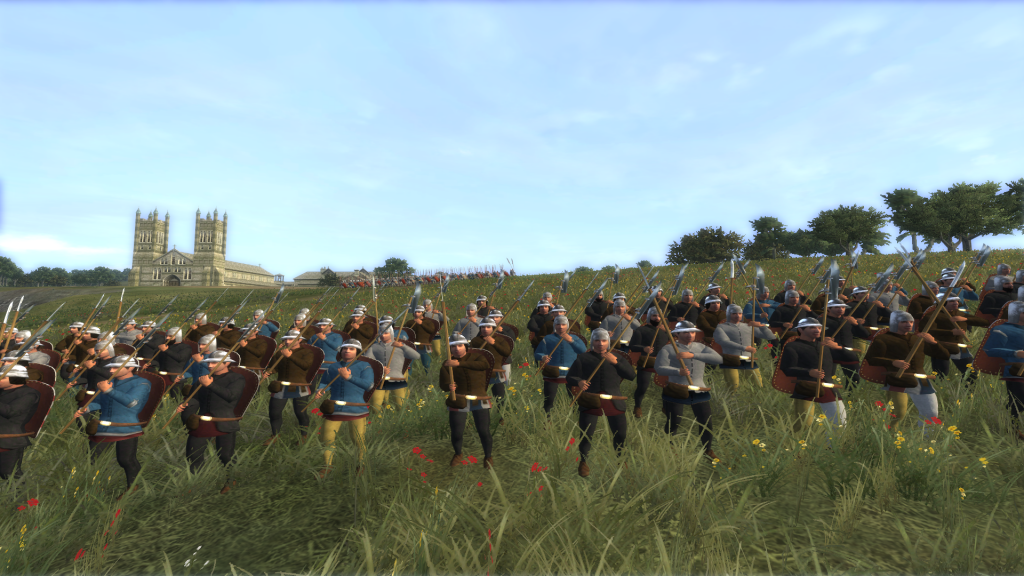
Click here for more images
Venetian Archers
The Venetian expansion into Dalmatia, Greece and the Mediterranean put them in contact with new styles of warfare and the Venetians were quick to adapt. As a result of the eastern trade links and expansion the Venetians began using the composite bows on a scale larger then any other Italian state. These recurve bows were known as Turkish bows and were used both by the venetians but also by the colonial troops and even natives drafted into the venetian forces such as the Cretans. The lower class archers are only protected by thick clothing, a helmet and a small round buckler known as a 'bocelliere', the wealthier archers can afford some chainmail and even a breastplate known as a 'corazza'. In close combat the archers use a venetian short sword. Even though they are not as efficient with the composite bow as their eastern counterparts they are still a force to be reckoned with.
Upgrade 0
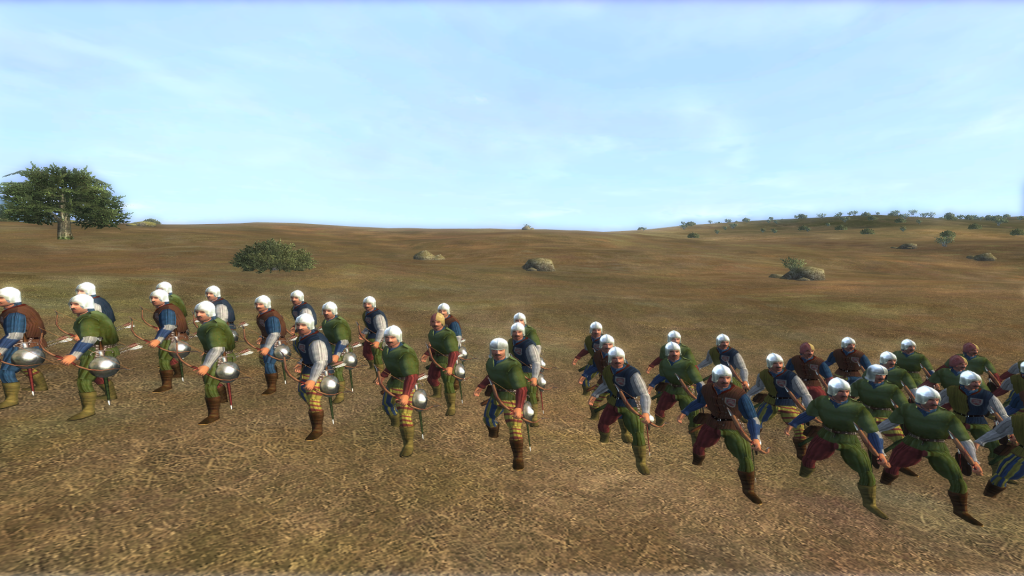
Click here for more images
Upgrade 1
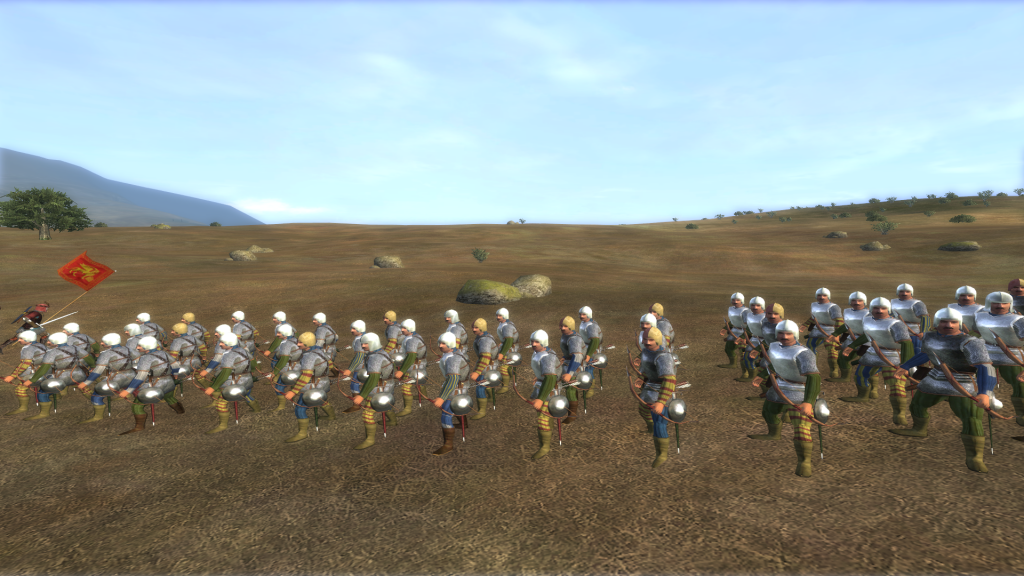
Sestieri Pavise Spearmen
Like many Italian settlements of the time the city of Venice was divided into 6 neighbourhoods known as the 'sestiere'. The 'sestiere' of Venice were Cannareggio, Castello, Dorsoduro, San Marco, San Polo and Santa Croce. Other Venetian territories such as Negroponte and the Island of Crete were also divided into 'sestiere' based on the model of the city of Venice. Each of the sestiere was required to permanently have 1,500 men in readiness to meet any emergency when half were to muster in the piazza while the other half remained behind to guard its own sestiere. In the case of a general levy Venice could raise the best-trained and largest infantry militia in all Italy. The sestieri are are armed with spears and protected by a typical Italian large pavise and wear light armour such as padded armour or brigantines. The sestieri can withstand an initial cavalry charge and can hold their own against similar infantry, however they are still only a citizen militia and will not be able to face professional soldiers in battle for long.
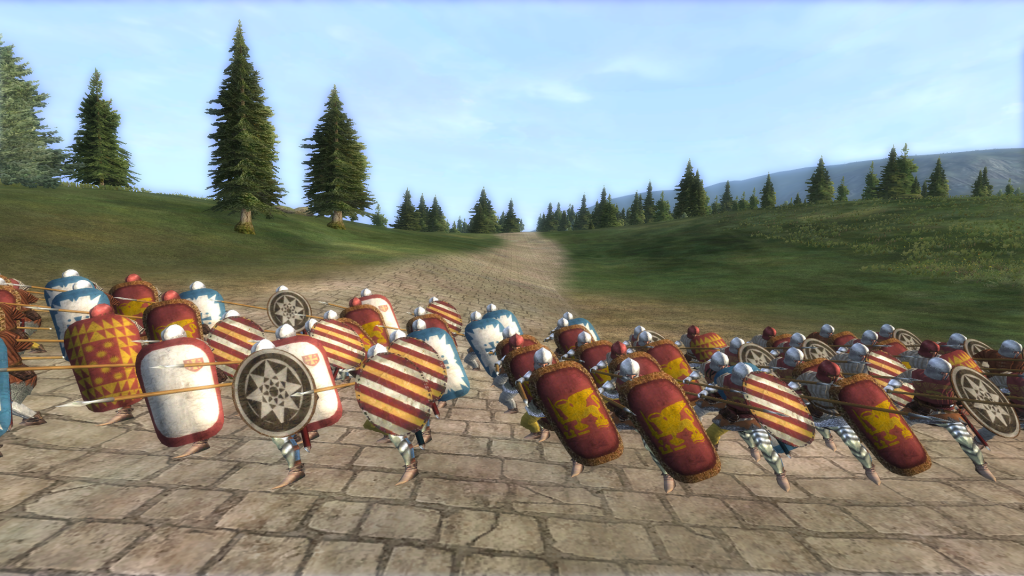
Click here for more images
Lanzelonghe
The lanza longa was a 3-4 meter long spear which was in use by the Italian militias ever since the XIIIth century. Although it is shorter then a pike the lanza longa is still used in an organised formation by the Italian militiamen. The lanza longa was developed due to the vulnerability of the infantrymen to heavy cavalry charges and the need to keep the enemy at a distance. The members of the Lanzelonghe are urban militiamen which receive training in the use of the long lance and can form a defensive ring to protect against cavalry charges, although they do not have the sophisticated organisation of the late pikemen. They wear medium armours such as brigantines and helmets and use small heater shields for protection, usually on their upper arm or shoulder. These men are an efficient form of medium infantry which can hold their line against cavalry charges, although repeated heavy cavalry charges will cause them to break. They are their weakest when their formation is broken.
Upgrade 0
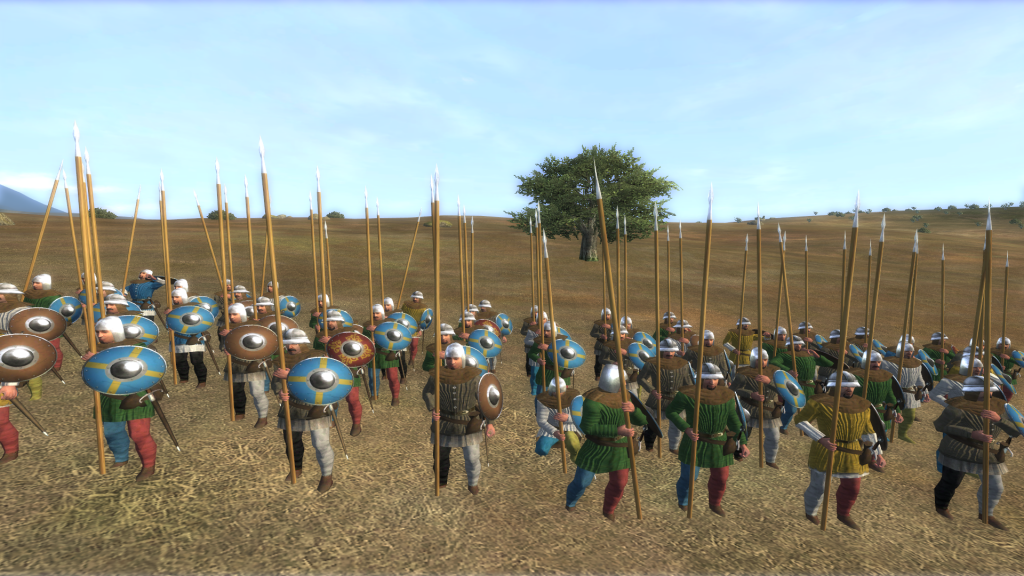
Click here for more images
Upgrade 1
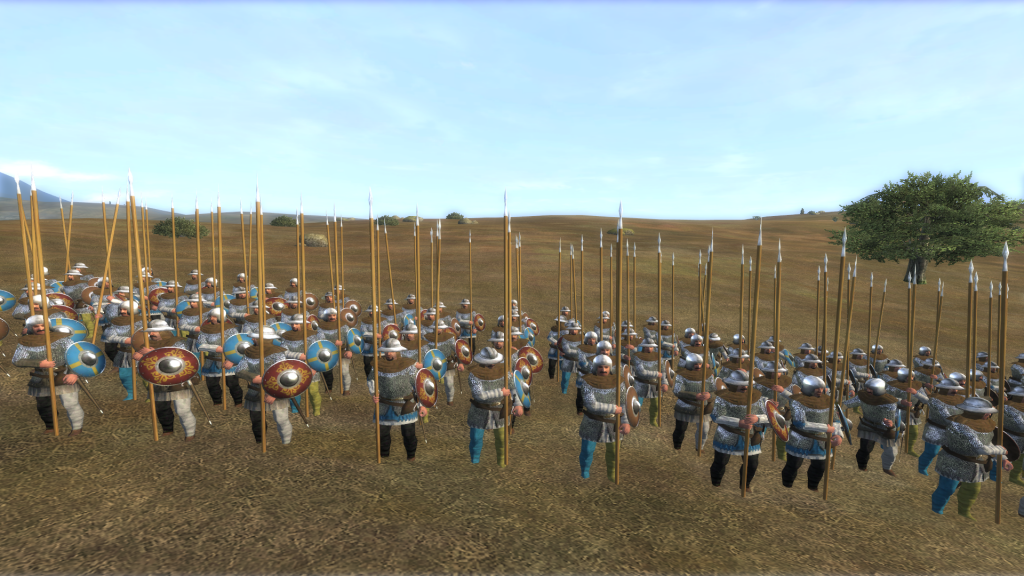
Click here for more images
Provisionati Pikemen
The Provisionati, meaning the ones who are planned to be paid first (provisione is the monthly pay they receive), are the first permanent infantry of the Italian states. They were introduced in the Venetian armies in the XVth century and were recruited from the militiamen of the Terra Firma but also from various mercenaries. The Provisionati are the elite communal pikemen which are selected for their age (generally 30 years) and also for their good financial position which allowed them to purchase good equipment for themselves. They were ordered to wear certain types of clothes with white and vermillion colours and in the 1500s were required to have the badge of the captain-general on their vest. They are protected by good brigantine armours and are equipped with long pikes which can counter the charges of any heavy cavalry. When deployed in formation they are vulnerable to attack in the side or in the rear and as such other melee and ranged infantry are deployed alongside them in order to protect their flanks, a strategy similar to that of the later Spanish Tercios.

Click here for more images
Italian Spear Militia
These soldiers represent the typical medieval Italic militias. They are designed to protect the shooters (such as the crossbowmen and arquebusiers) with their large shields. Composed of commoners and peasants, these militiamen can not afford heavy armour, having to settle for reinforced leather clothing. They are a cheap and poorly trained body of men armed with spears and able to form a shield wall which can be used effectively against the impetuosity of the enemy infantry, but it would not hold up in the face of a heavy cavalry charge.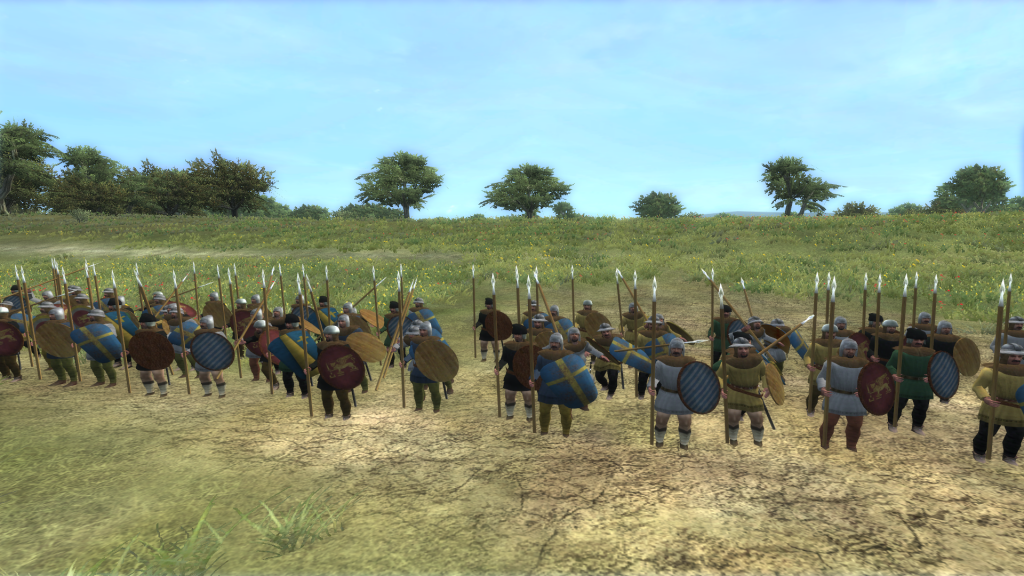
Click here for more images
Arsenalotti Arquebusiers
In the Serenissima Republic the arsenal guild constituted a corporation of military-workers employed in the arsenal which was created in the eleventh century by the unification and nationalization of shipbuilding activities. Members of this social body had the custody of the Arsenal and resided mostly in its vicinity; they acted as security and surveillance during meetings of the Great Council and rowed on government vessels used in public ceremonies and on the Doge's ship. They also had the function of the fire department. They received a salary for their whole life which was guaranteed by the State even in case of illness. The Arsenalotti were armed with various weapons however the most recent addition is the arquebus. The first recorded use of the handgun by the Venetians is during the Battle of Chioggia in 1380 when the Venetian fleet defeated the Genovese. The Arsenalotti Arquebusiers wear very little armour as they favour mobility and flexibility, especially during naval battles when a heavy armour is more of a liability then an asset. The arquebus had the power to penetrate through armour and create many casualties. The Arsenlaotti are elite trained marksmen that use their gunpowder weapons to sow death and destruction in the enemy ranks.
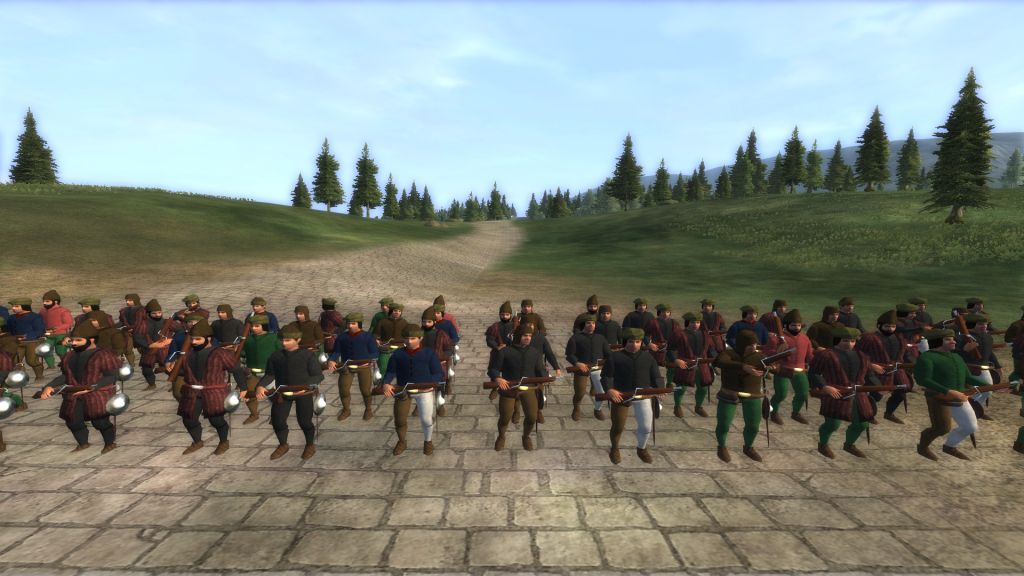
Click here for more images
Arsenalotti Crossbowmen
In the Serenissima Republic the arsenal guild constituted a corporation of military-workers employed in the arsenal which was created in the eleventh century by the unification and nationalization of shipbuilding activities. Members of this social body had the custody of the Arsenal and resided mostly in its vicinity; they acted as security and surveillance during meetings of the Great Council and rowed on government vessels used in public ceremonies and on the Doge's ship. A law of the Venetian senate of 1303 says that the masters of the galleys must hire bowmen selected according to the rules made by the councils and they must row the galley. By the middle of the XIVth century the bowmen were forbidden to take part in rowing or any other ship-boarding activity that was not connected with crossbows. They continued to be called 'bowmen' even after the introduction of handguns. Venetians learned to fire a crossbow as part of their civic duty obligations and most people knew how to renovate crossbow, make light bolts and twist and tie the string. The Arsenalotti Crossbowmen wear brigantines, mail corseletes and other mail protection being a well armoured ranged unit. They can participate in both land based and colonial and shipboard battles.
Upgrade 0

Upgrade 1
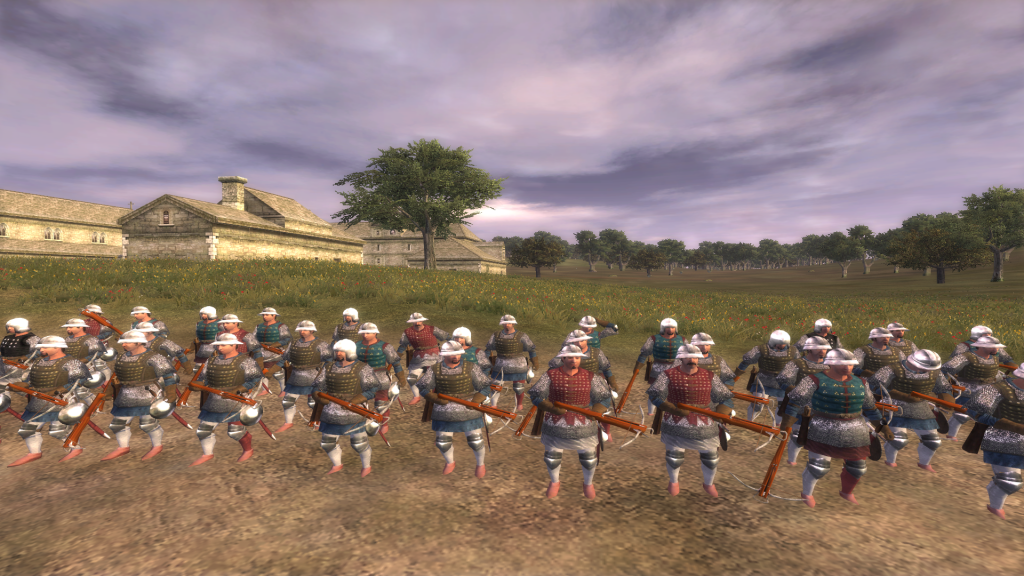
Click here for more images
Venetian Serragenti
The serragenti represent the officer class of the Italian communal armies. They act as the lower tier officers in the militia units of the communes. During war time the serragenti acted as the shock infantry of the communes, standing behind the pavesari and commanding them and ensuring they remain organised. The groups of serragenti ensured that the front lines held and made sure the men held the line, as well as taking note of any men that wavered and ran away. When the time was right and the enemy was at breaking point the serragenti charged from behind the pavises and disloged the enemy formations striking the final blow. As the serragenti had both a commanding role but also an organisatorial one they were the only ones allowed to give corporal punishments to the militiamen. The serragenti are protected by chainmail, heavy gambesons and helmets. They use warhammers as weapons to pierce enemy armour and shields.
Upgrade 0
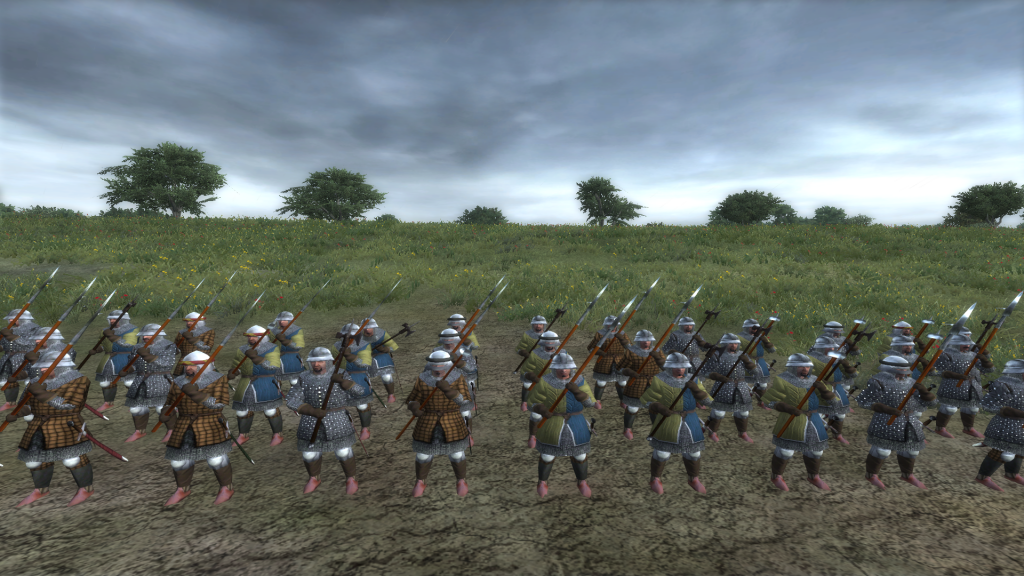
Click here for more images
Upgrade 1
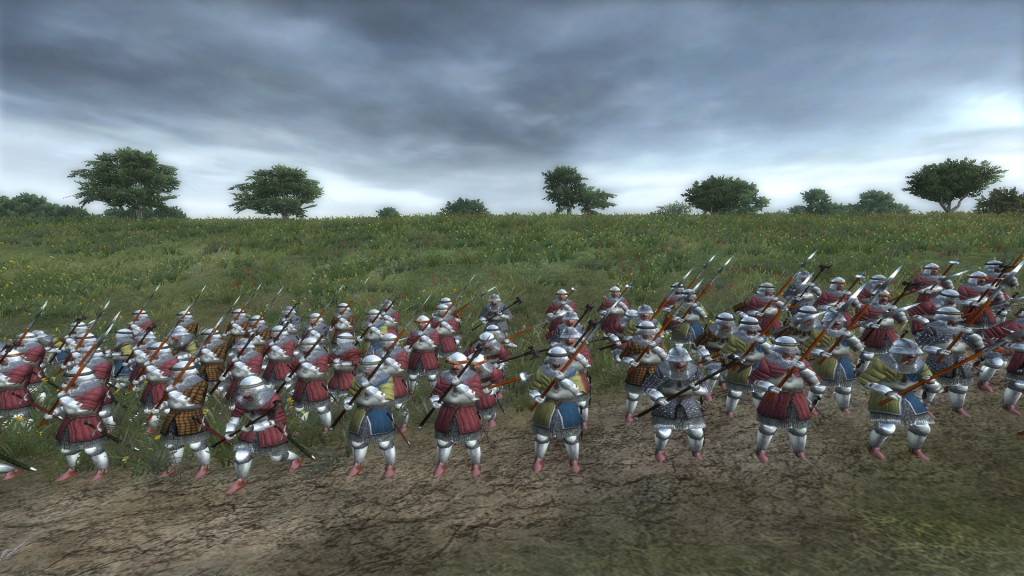
Click here for more images
Venetian Marine Infatry (Fanti da Mar):
The power of Venice comes from its vast trading network which brings in wealth and prosperity. The Terra Firma has always been a secondary priority, protecting the vital trade links remains of utmost importance. In order to ensure the security of its trade and its overseas colonies the Venetians have raised a force of veterans capable of fighting both on its galleys during naval battles and boardings but also on land in the faraway outposts and colonies.
The marine infantrymen are seasoned soliders whose duty is to protect the remote outposts of the Venetian empire both on land and on sea.
They are well protected by helmets, large shields and armour and their primary weapon is a warhammer. The hammer has a long handle and is a very efficient armour piercing weapon allowing the infantrymen to face even the heaviest foes on the battlefield. As they are an elite force their numbers are quite low and as such they are only sent to critical locations. They are to be found on the Venetian war galleys and manning the fortresses in vital trade outposts in the Mediterranean and beyond.
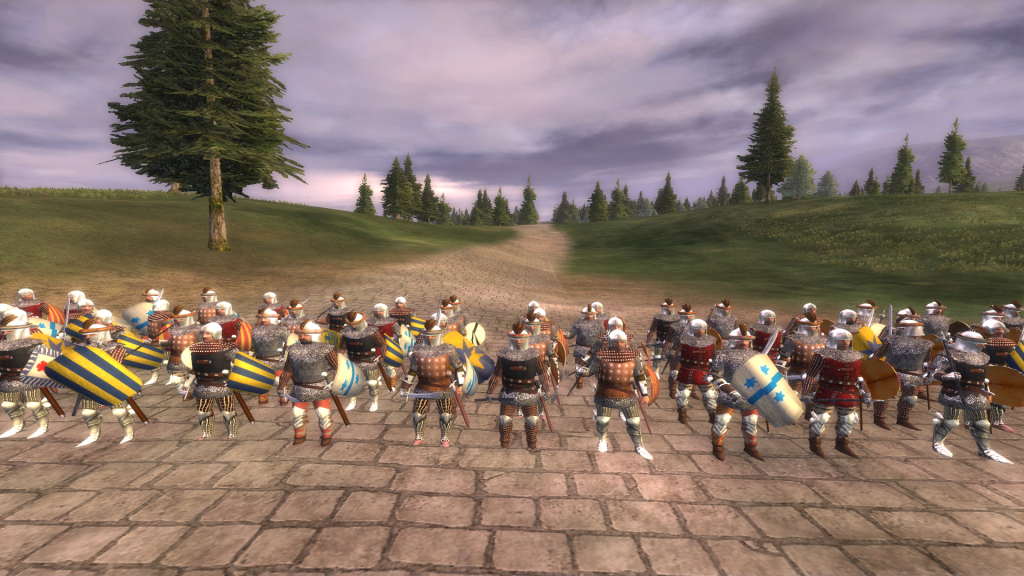
Click here for more images
Excusati Guard
In the thirteenth century, after the Republic of Venice managed to emancipate itself from under the influence of the Roman Empire the Doges of Venice began to recruit an elite force on the model of Varangian Guard. Contemporary authors even called them the Praetorian guard of the Venetians. The role of the Excusati is the protection of the Doge and the Council of Ten. The members of this unit were recruited from amongst the young 'excusati'. The excusati were the high Venetian nobility which were exempted from services with the state and the payment of taxes. Initially the members of the guard wore eastern-inspired equipment such as scale or lamellar armour over a hauberk similar to the Romans, however by the XIVth century they had adopted Western equipment. They are protected by strong armour and chainmail and the highest ranked even wear half-plate or plate armour. In addition to their armour they use large shields. As weapons they use a heavy spear to keep their enemies at bay and bar entry to the Doge's premises. If they are engaged in close quarter they draw their warhammers which can be wielded with deadly accuracy. At any one time there but a select few men that make up the Excusati Guard and they represent the elite of the Venetian military.

Click here for more images
Zaffones Light Cavalry
Present in almost all the armies of the Lombardo -Venetians from the thirteenth century onwards, the zaffones come from the poorest social classes. Their presence by the side of the army is motivated by the gain obtained in their raids. They are light cavalry that pillage enemy territories, they usually precede the advancing army cutting crops and devastating fields and settlements. Their tactics ensure that supplies are gathered for the advancing army and also that the enemy is demoralised and terrified. They are not professional fighters by any means and lack discipline often employing excessive force which may do as much damage in friendly territory as they do in enemy territory. They are lightly armoured with gambesons and protected by shields and use spears as weapons. The zaffones can be an efficient type of light cavalry to harrass enemy forces but their unruliness discounts them from engaging in prolonged or organised battles.
Note: horses will be changed to marka ones

Click here for more images
Signori Heavy Cavalry
Although the Venetians are better known for their maritime prowess they also fielded effective armoured cavalry. A regulation of 1239 stipulates that each Venetian knight had to have a war-horse, two other horses and three squires. The 14th century poet Petrarch declared that 'this nation of sailors surpassed all others both on horseback and at sea'. Various Venetian aristocrats bred fine horses on their mainland estates, though most of the animals were imported from Germany and Hungary. The Venetian lords know as the signori could afford the most expensive equipment of the time and used the finest heavy armours from Italy for their protection. Armed with long cavalry spears they command the Venetian armies in the field and are at the spearhead of charges alongside famed condotierri and the broken lances.
Note: horses will be changed to marka ones
Upgrade 0 1345-1380
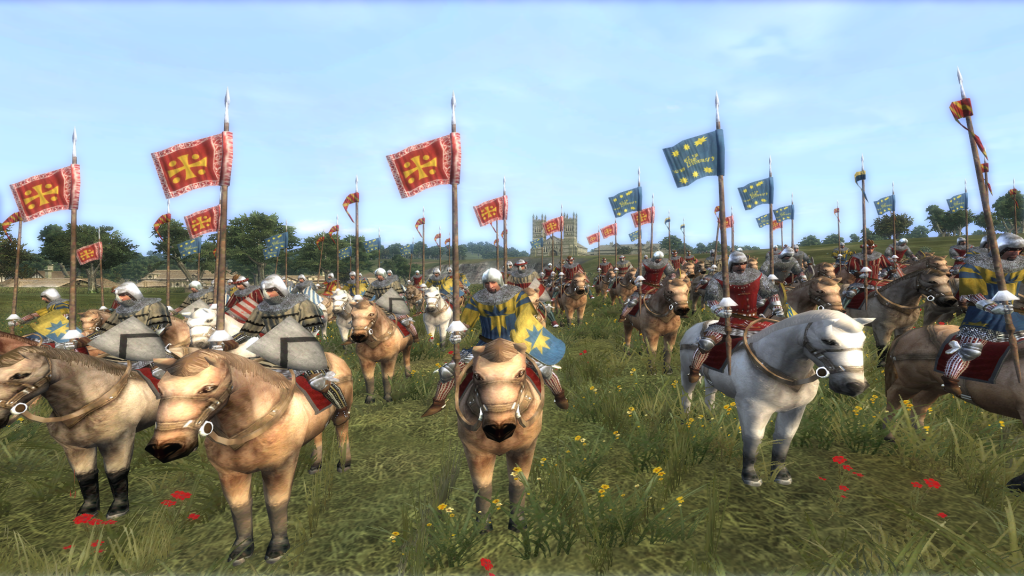
Click here for more images
Upgrade 1~ 1380-1425
Upgrade 2~ 1425
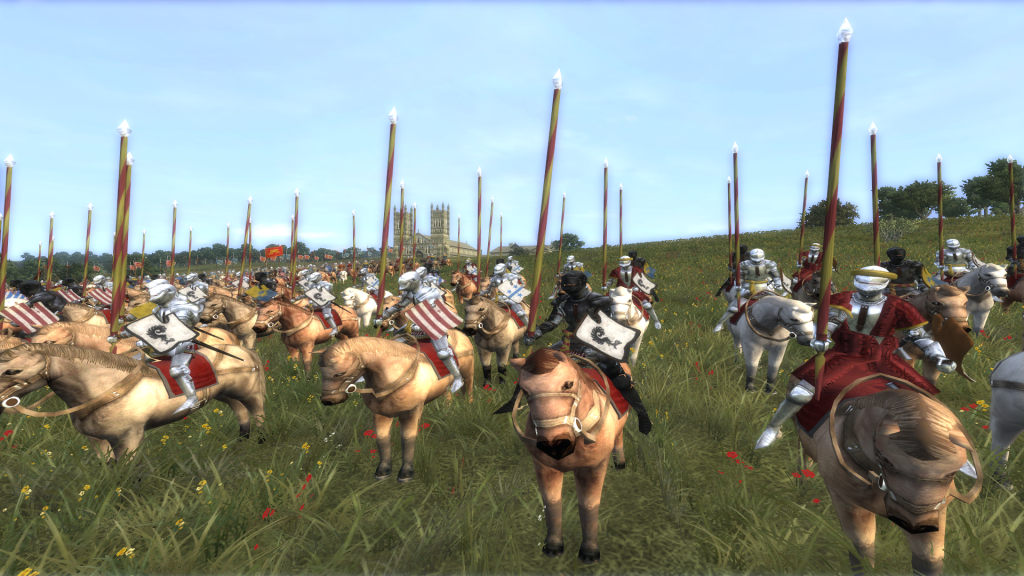
Click here for more images
Click here for more images








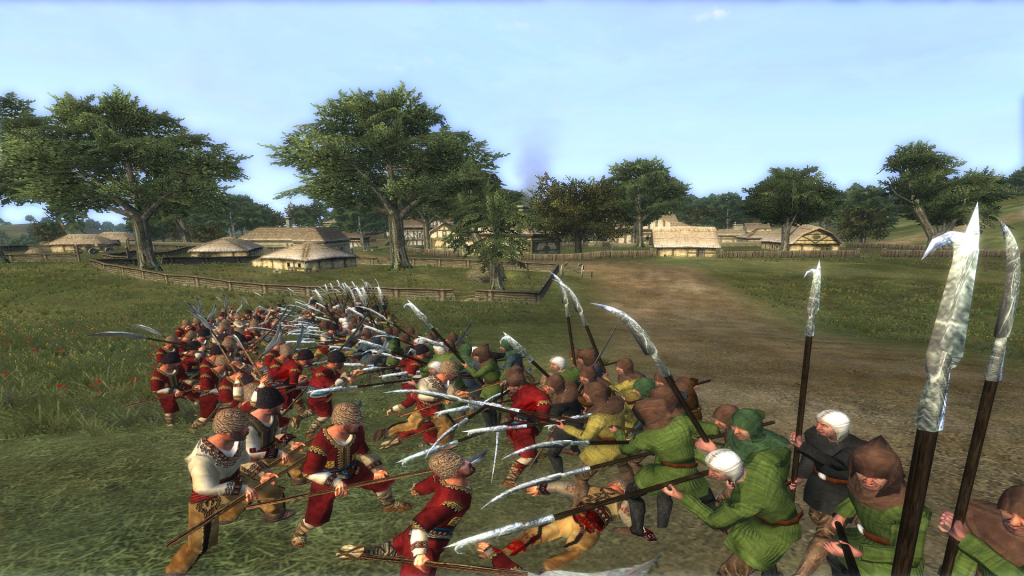
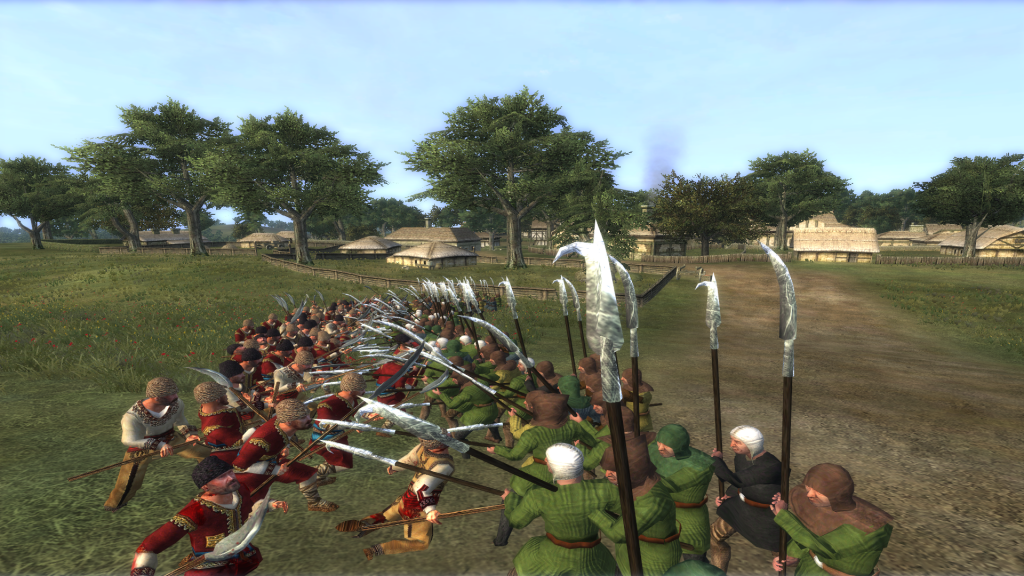

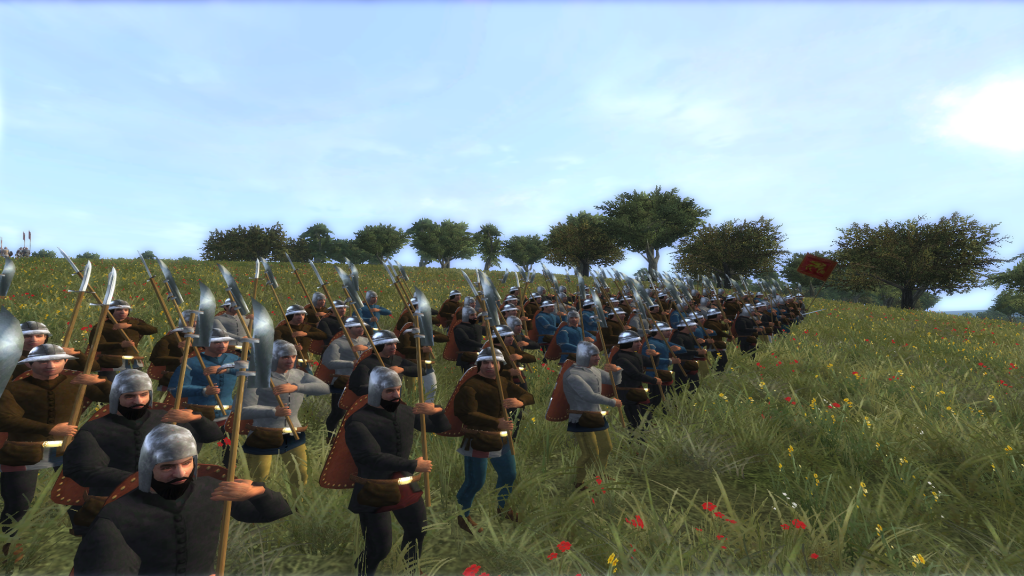
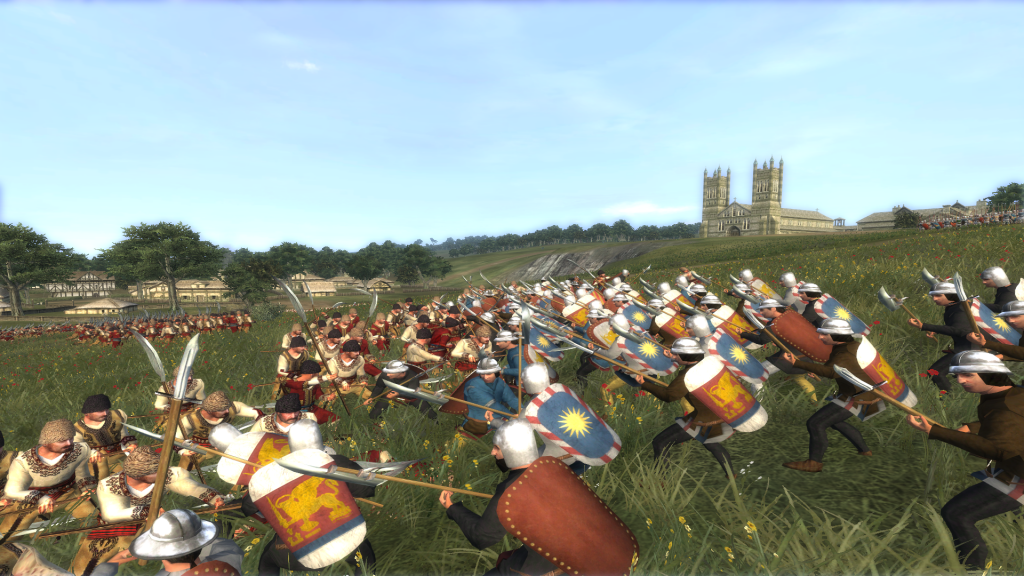


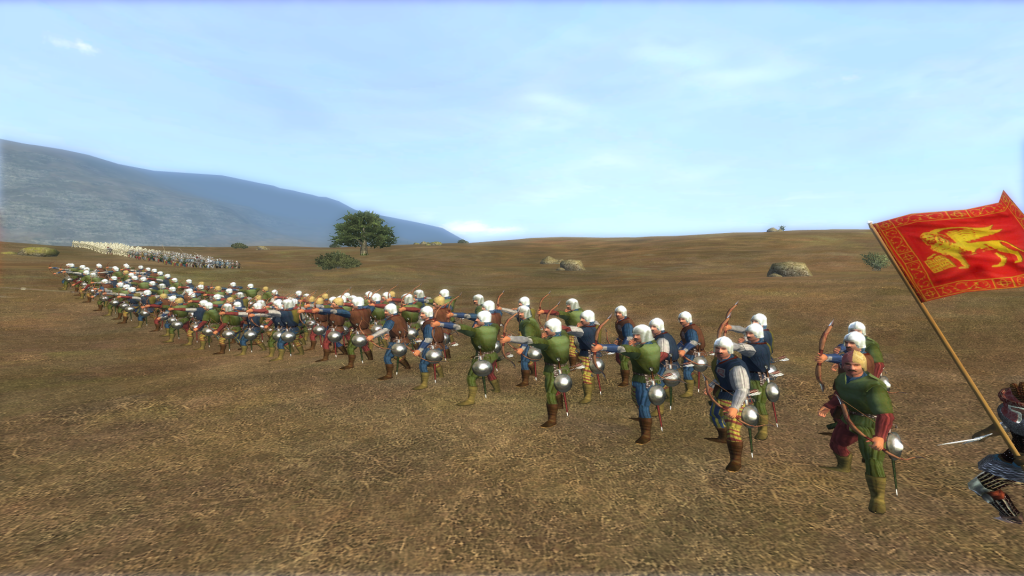
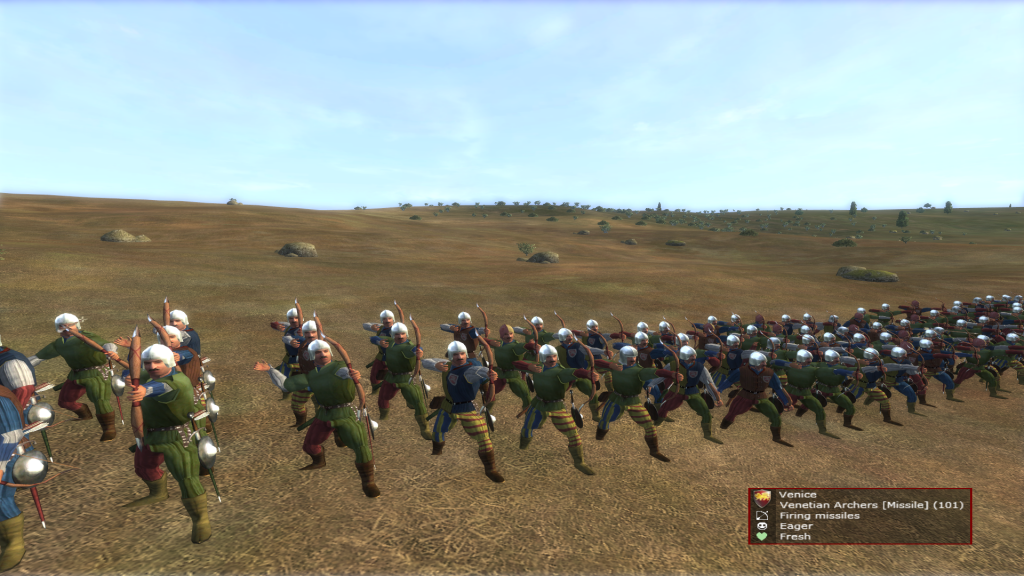

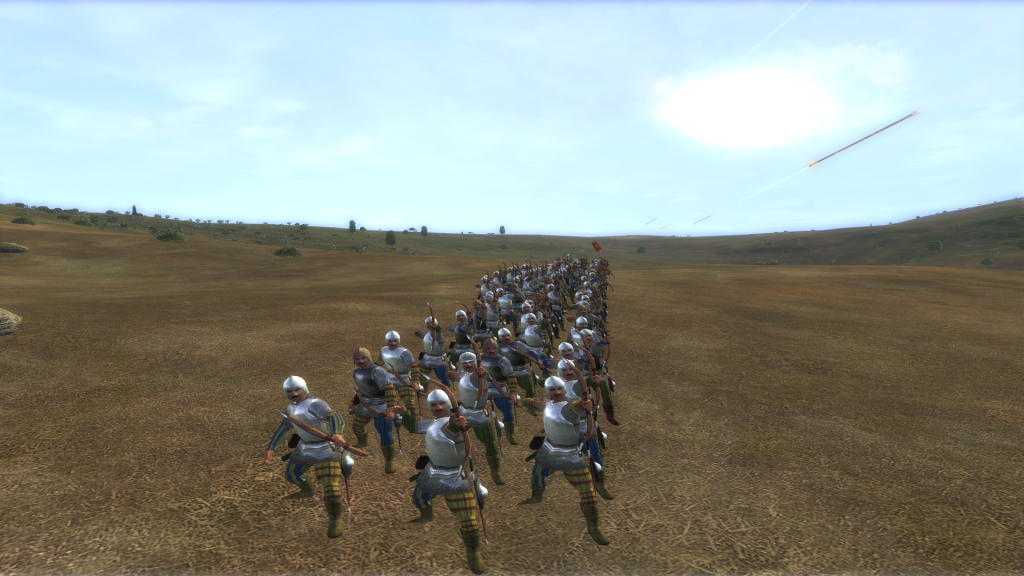
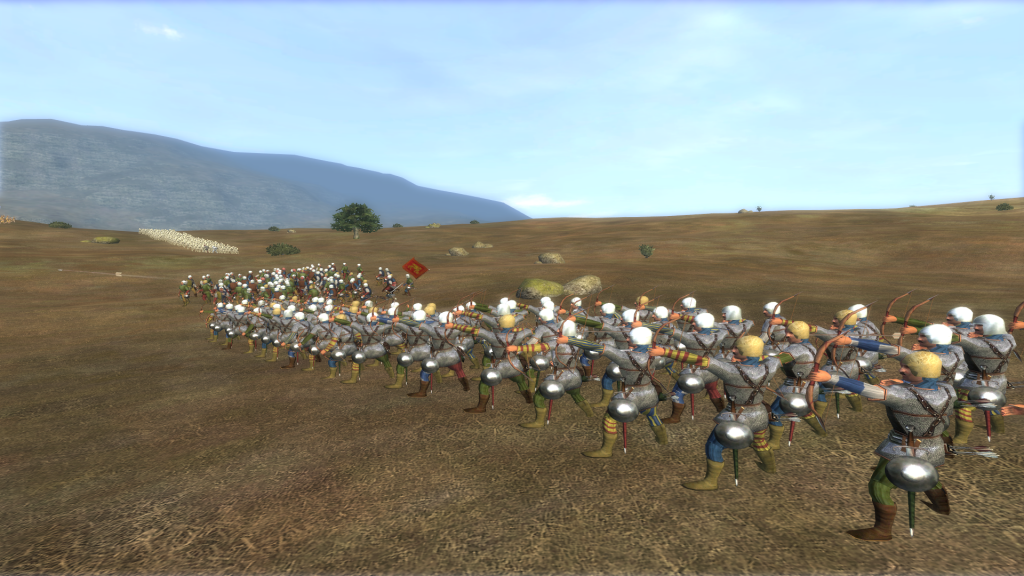

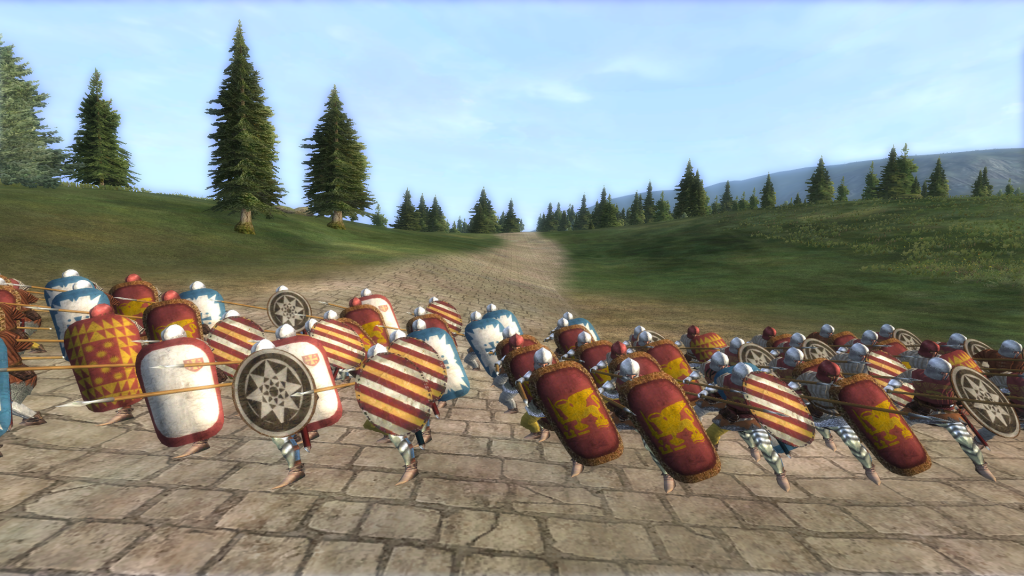

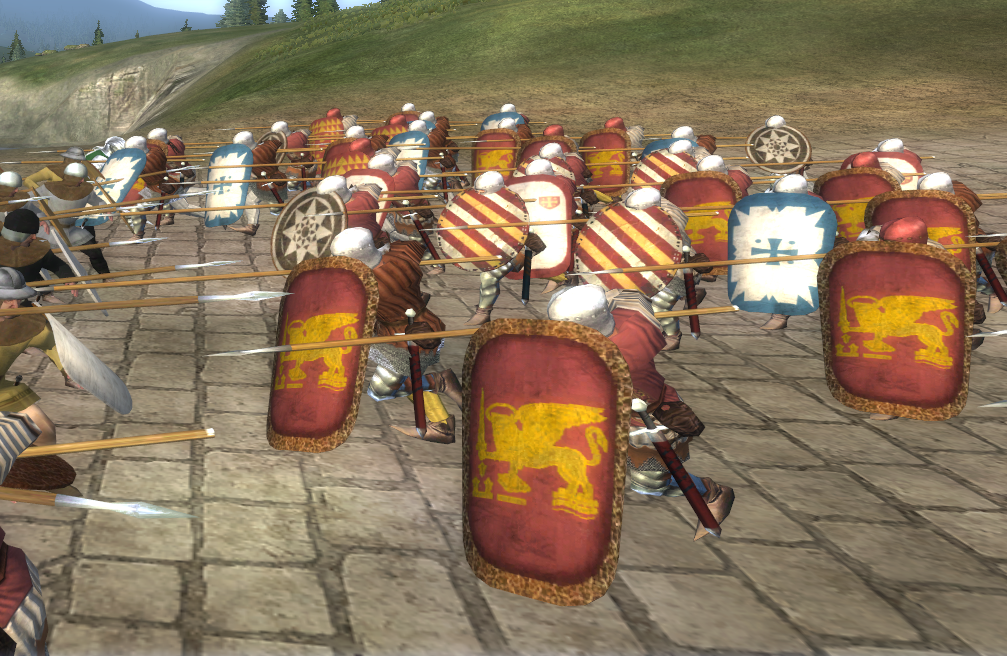

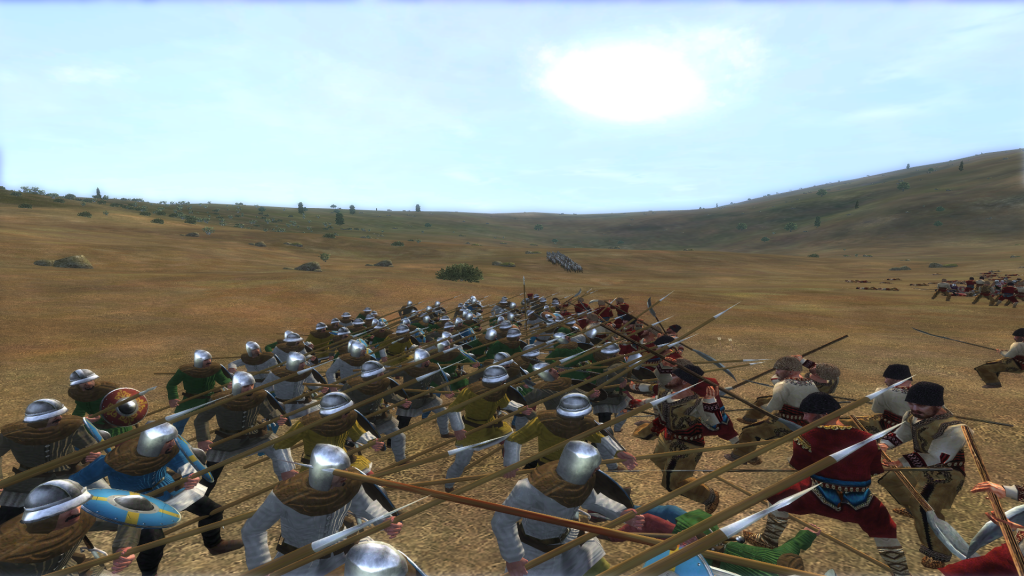
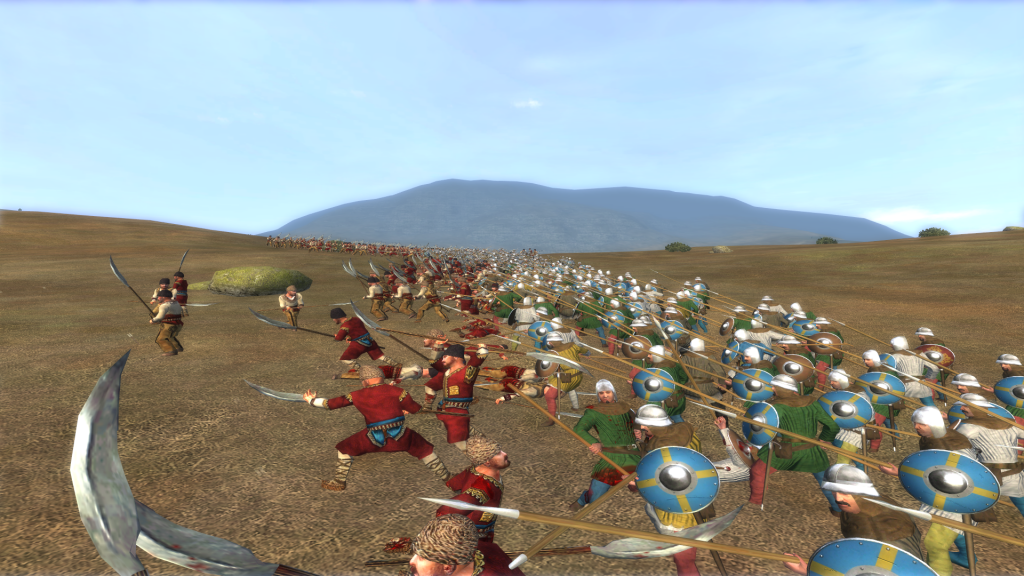
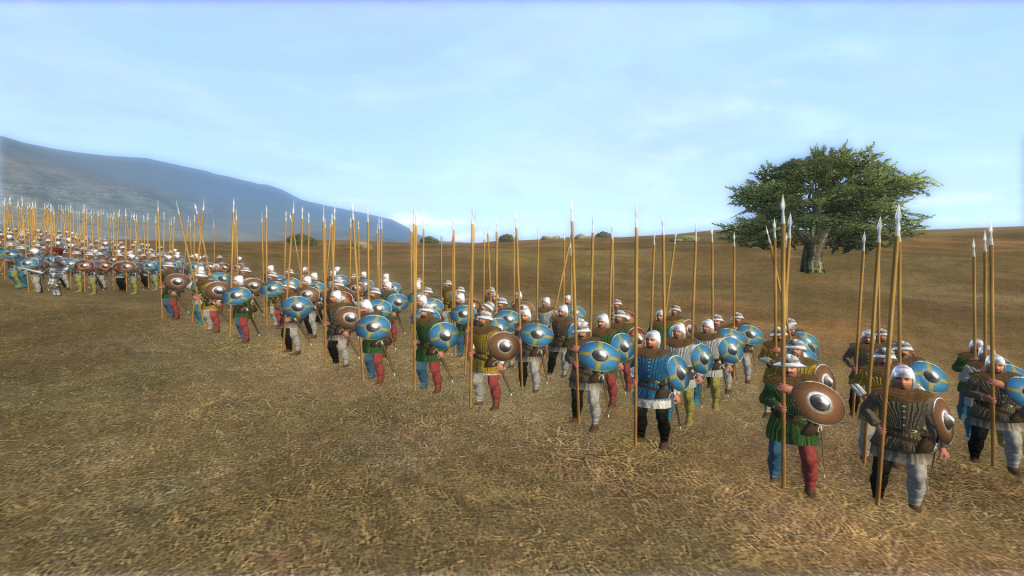

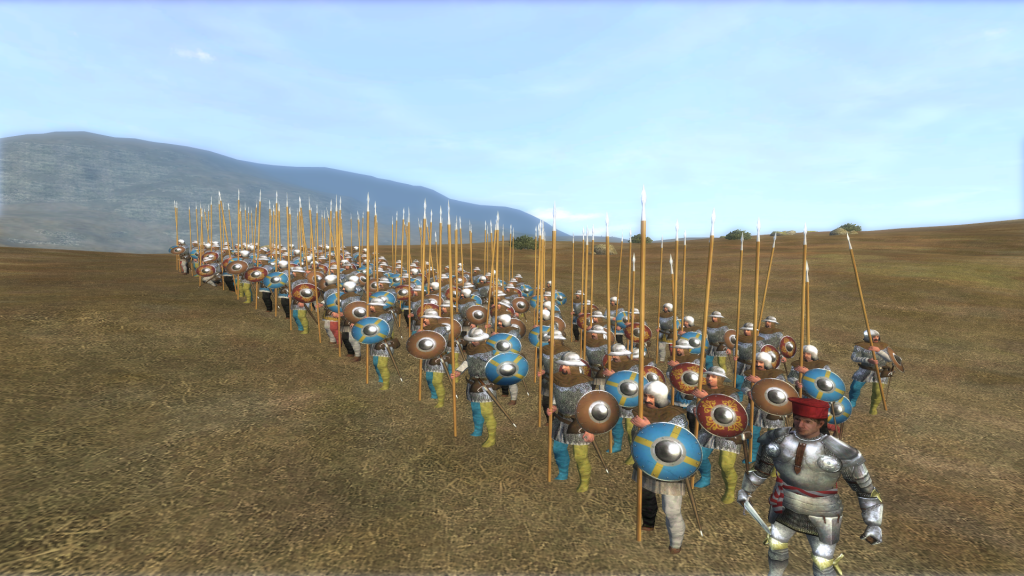

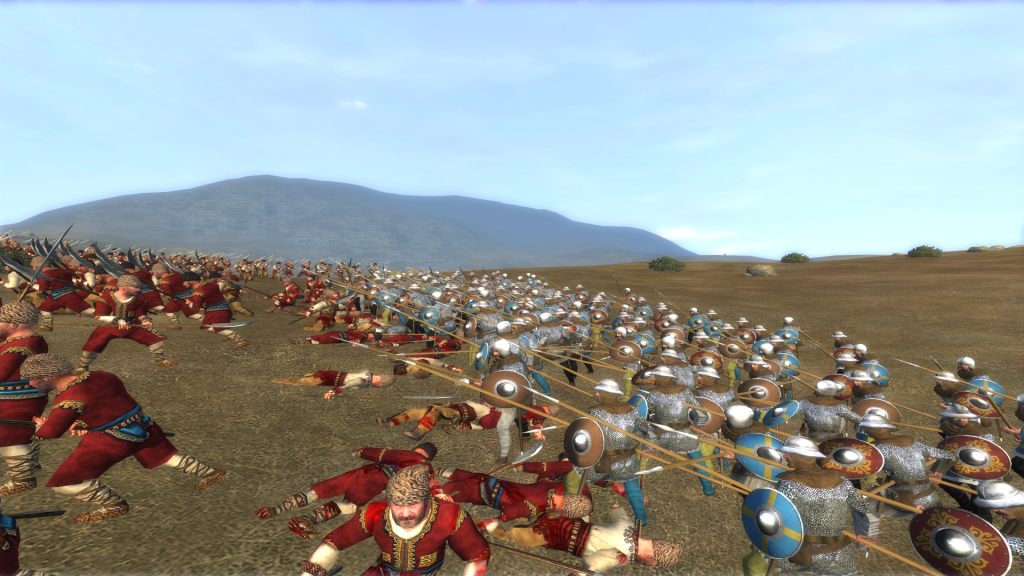

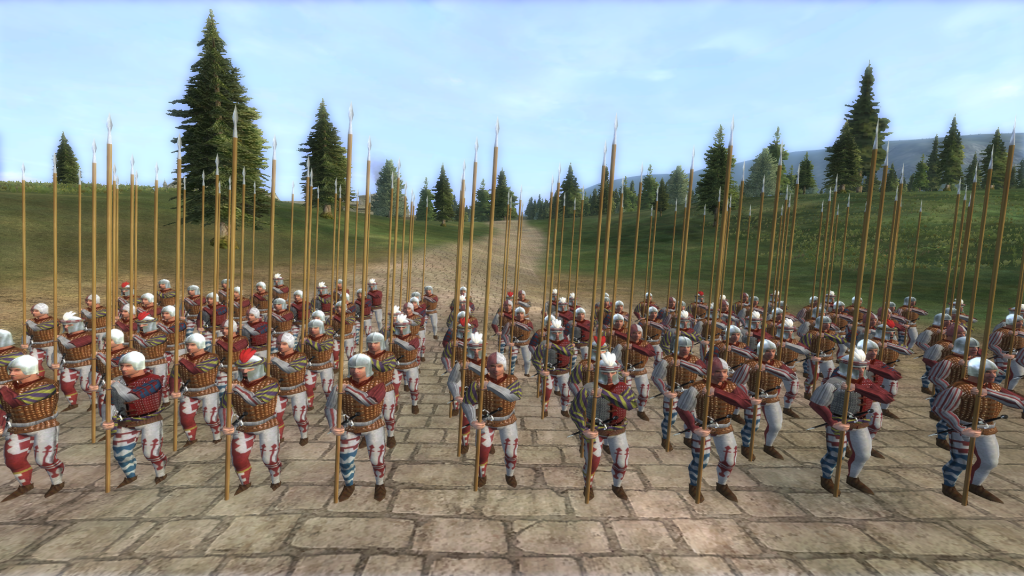
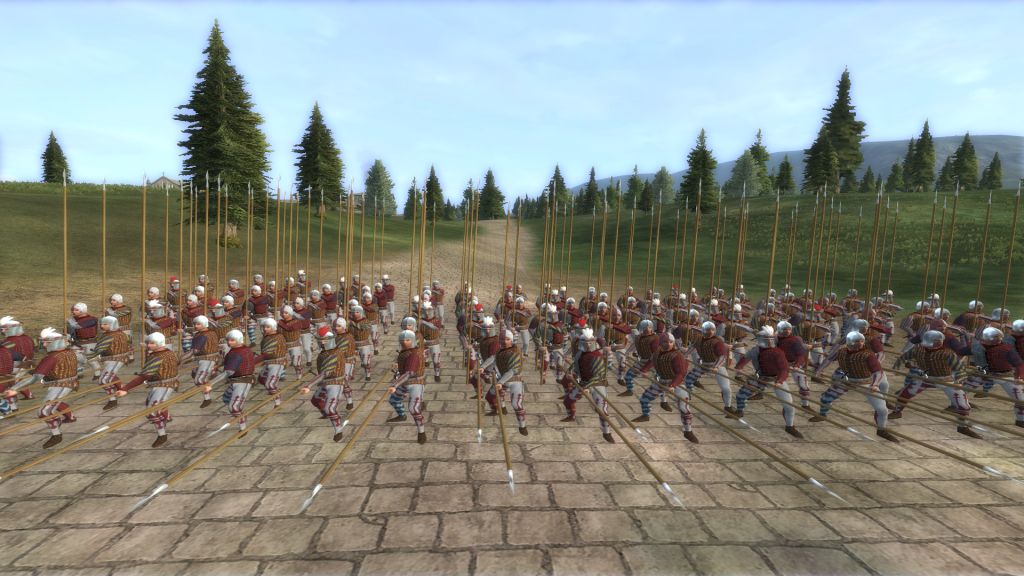
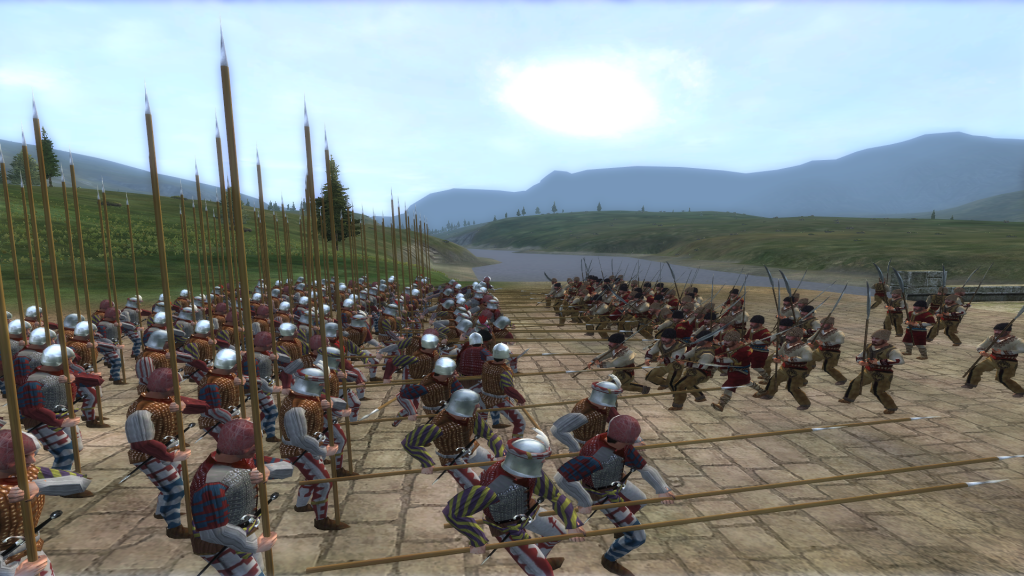
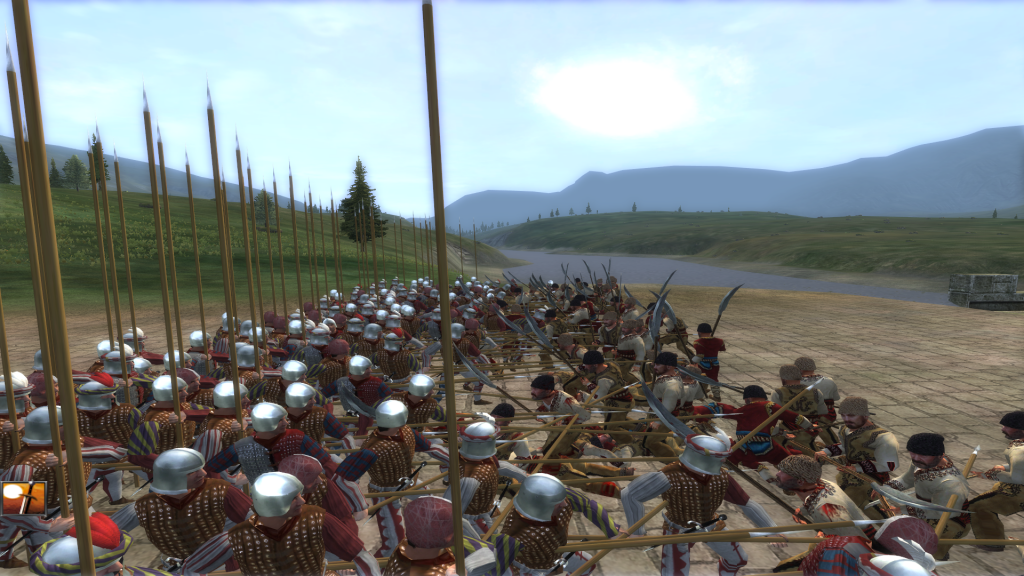

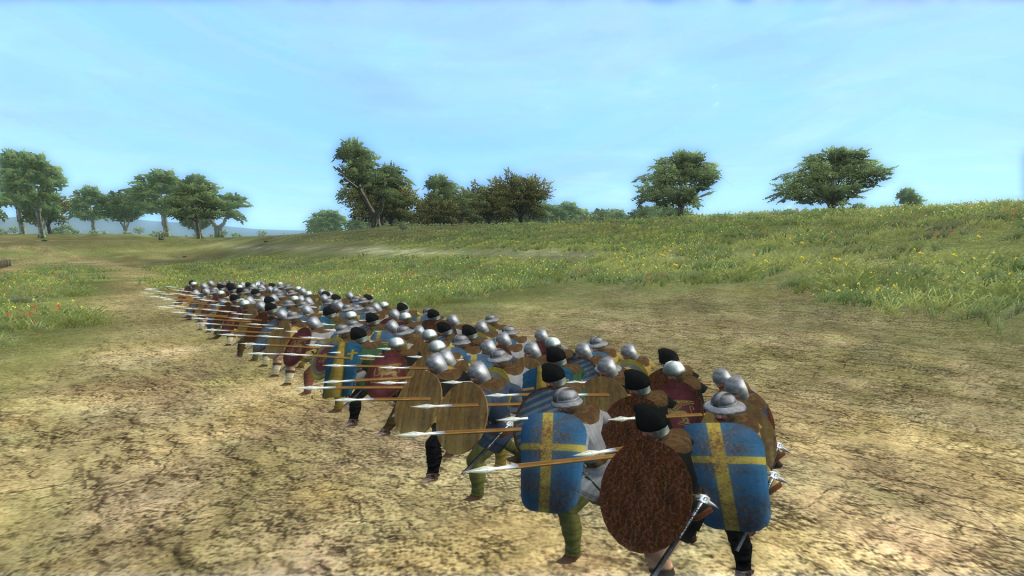
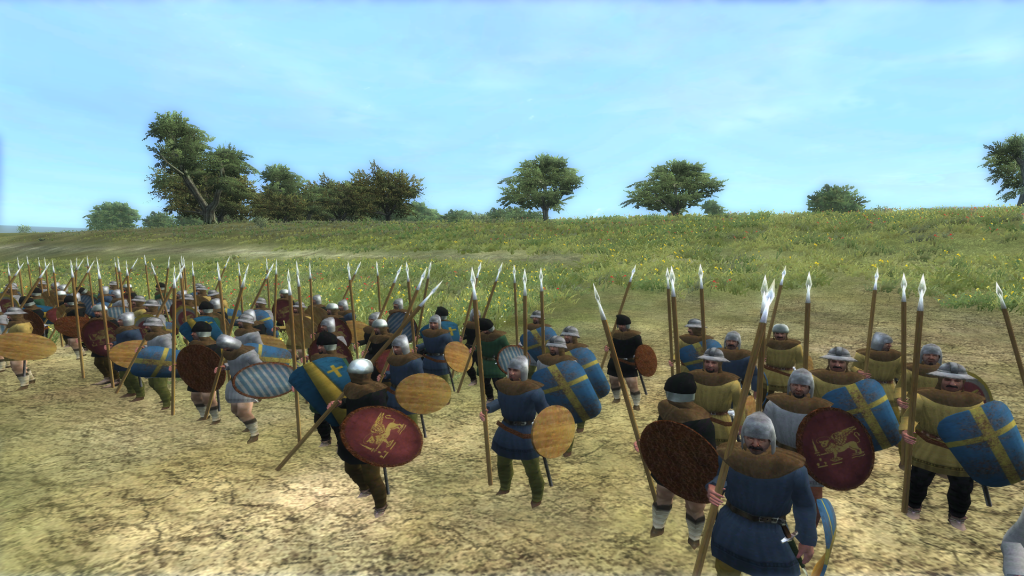


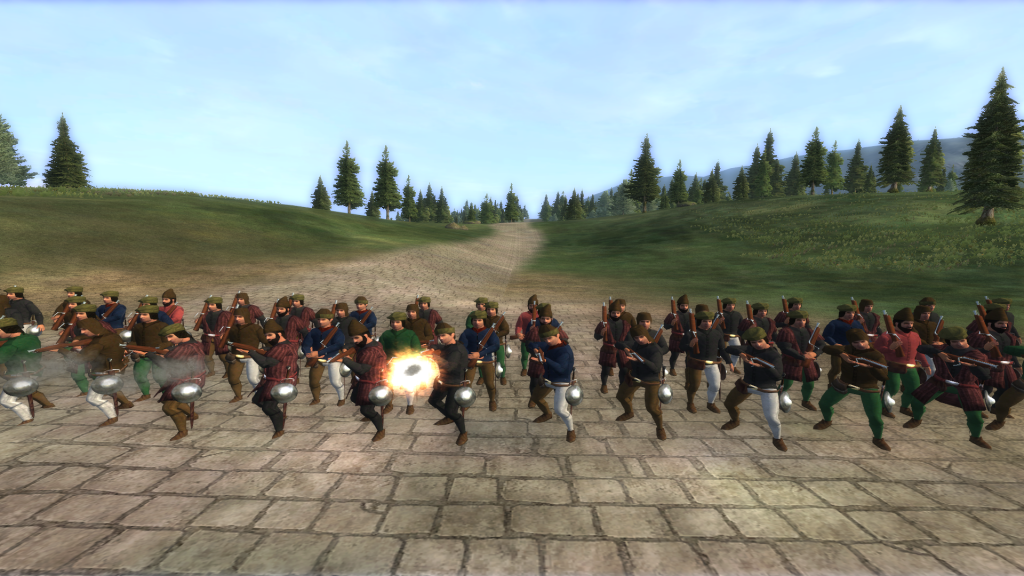
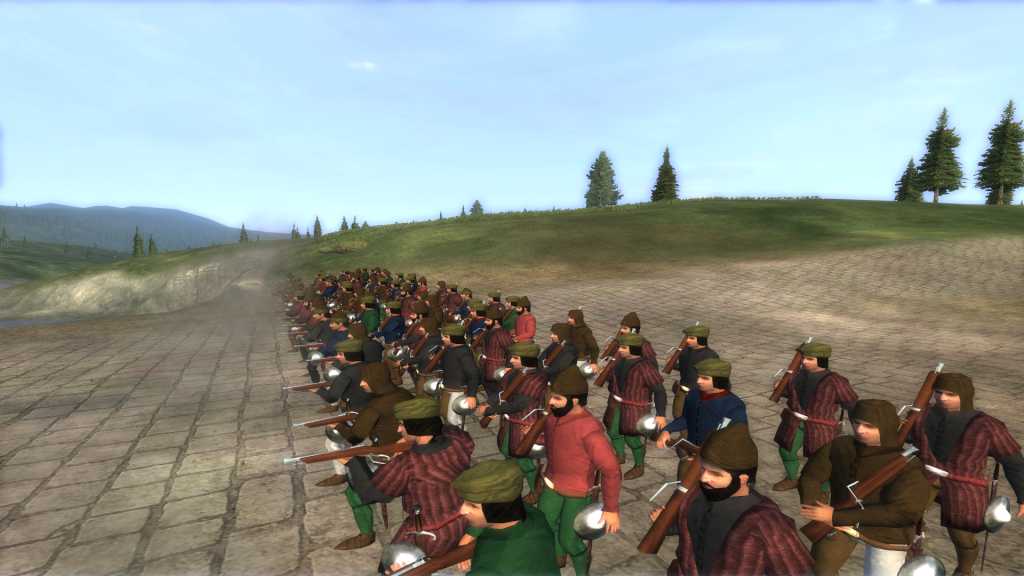
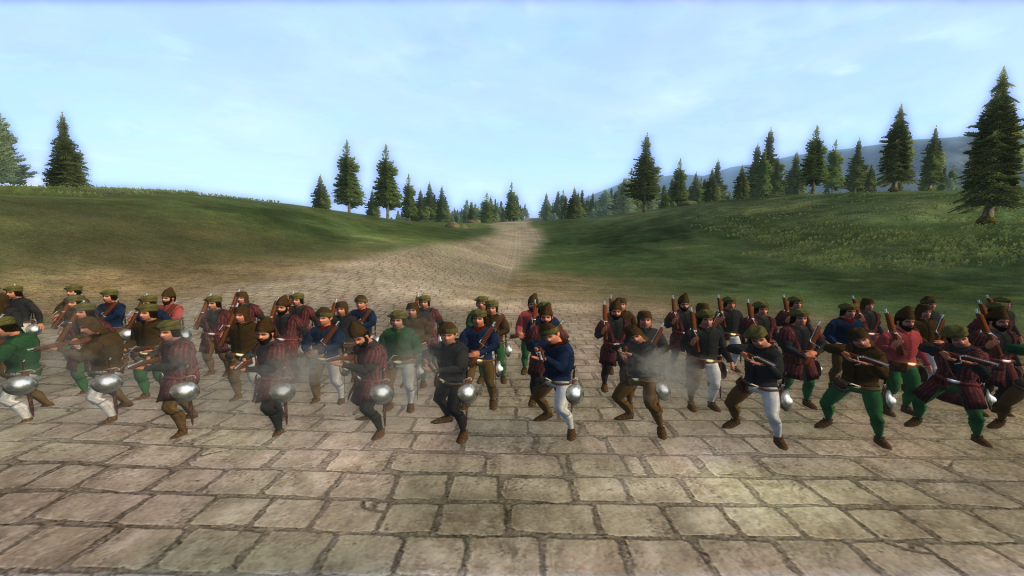

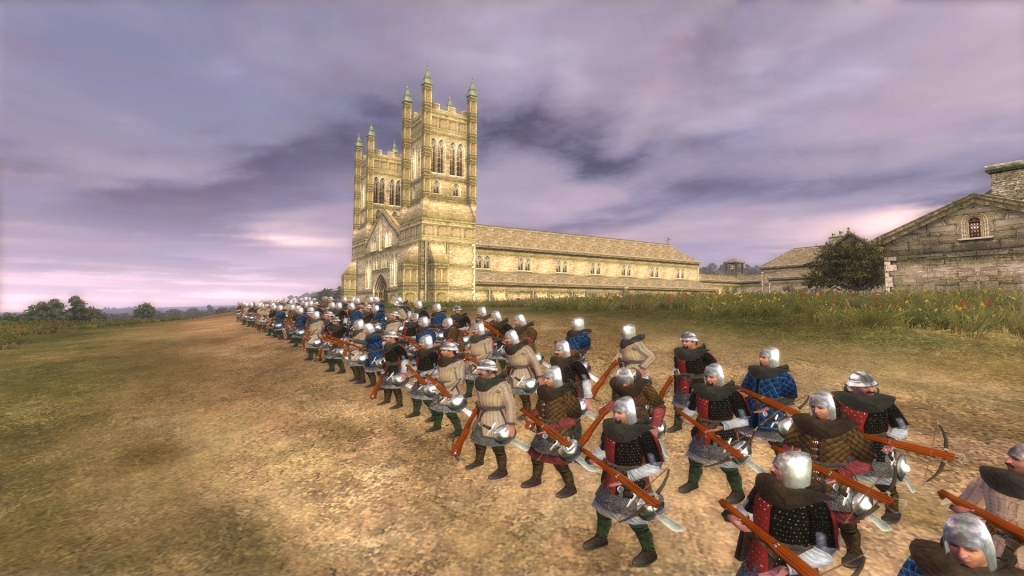
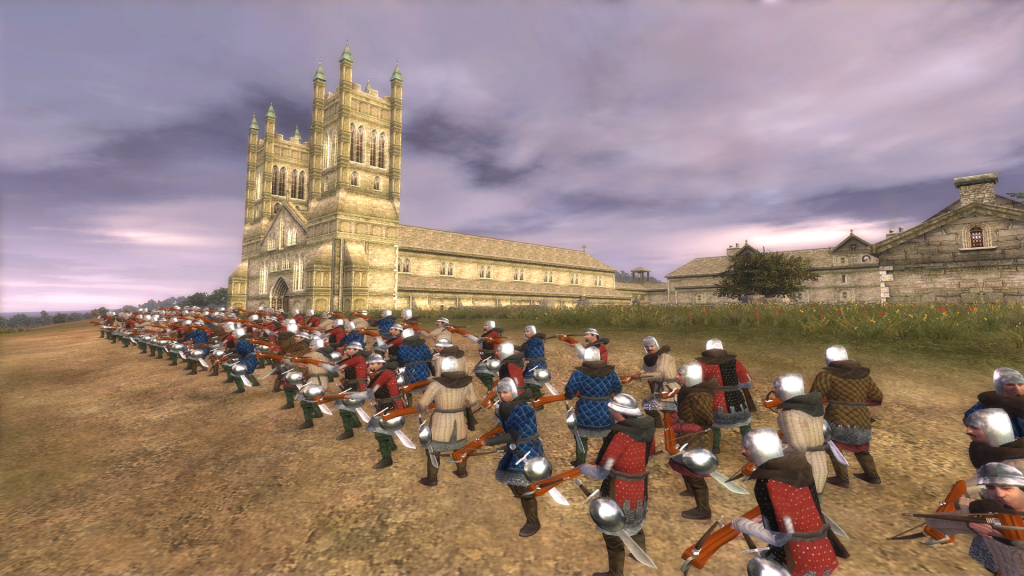
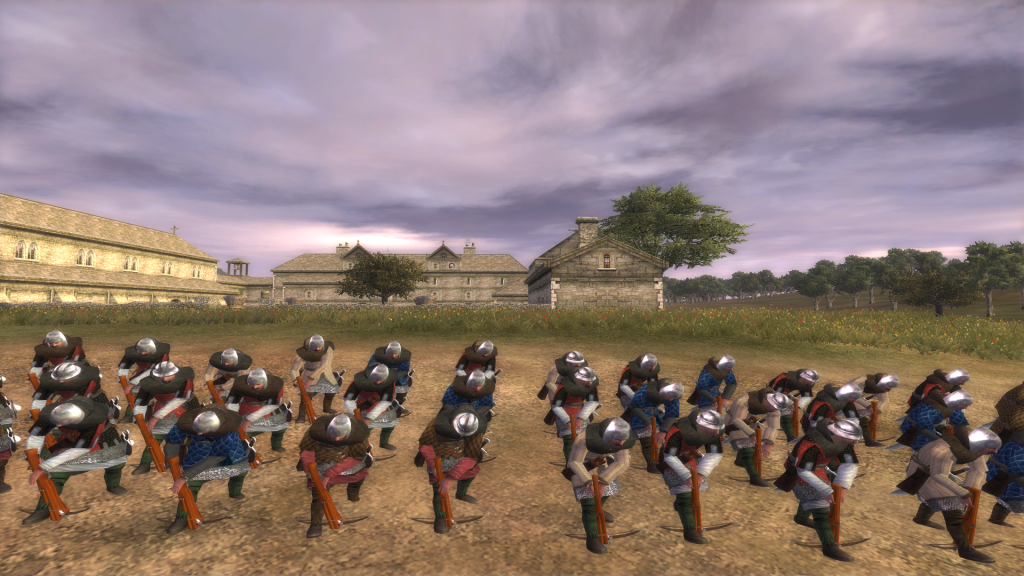

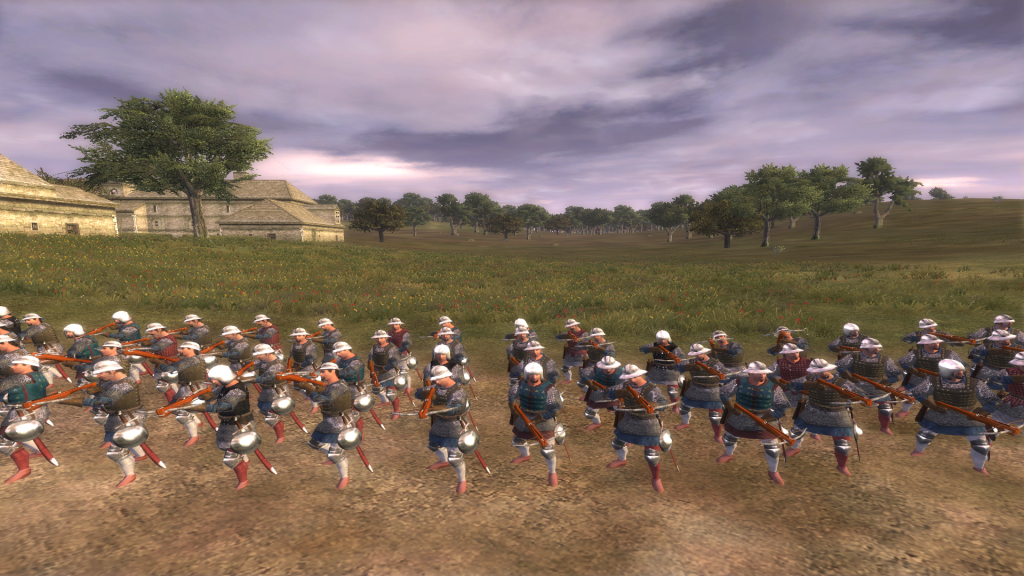
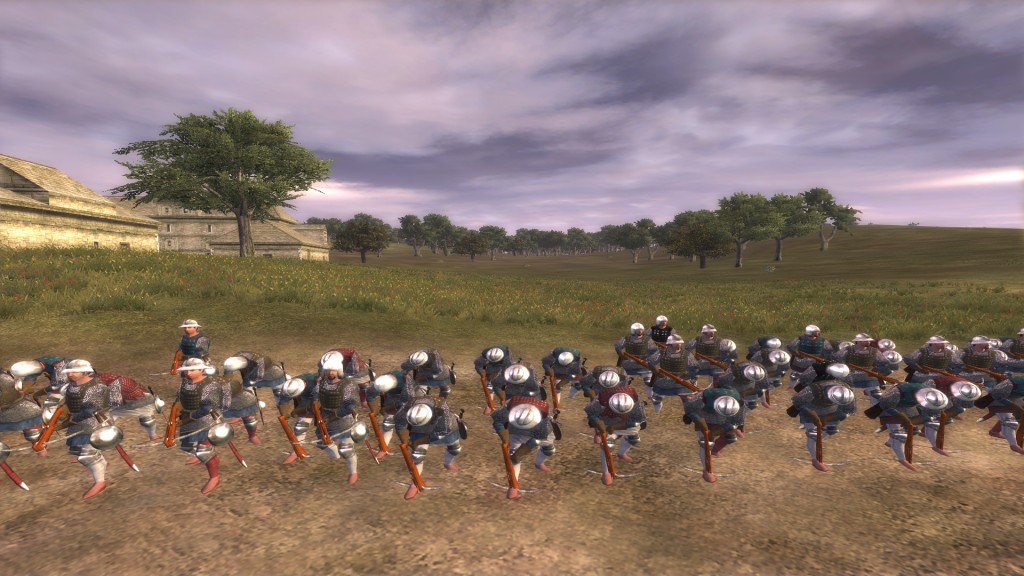


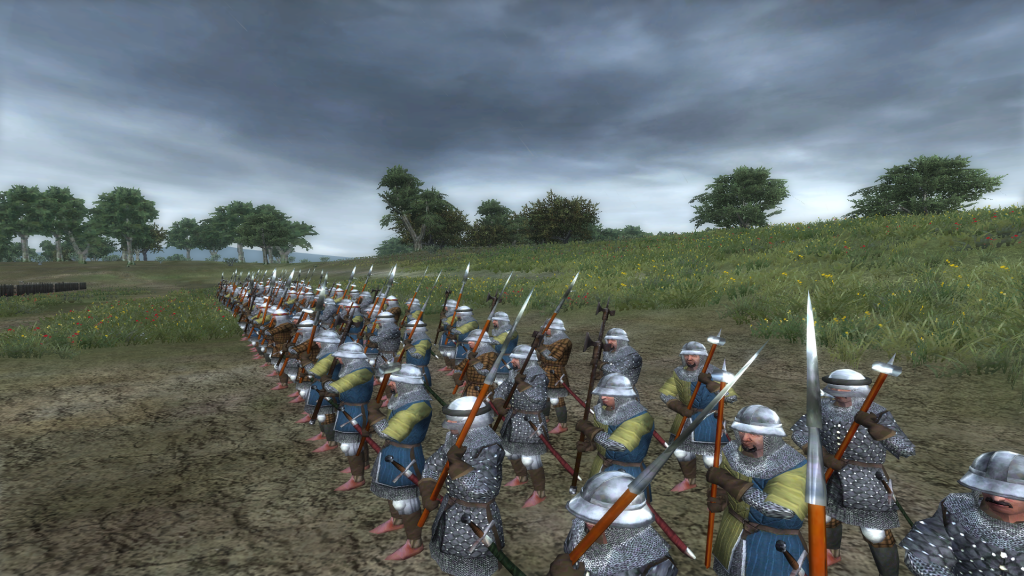
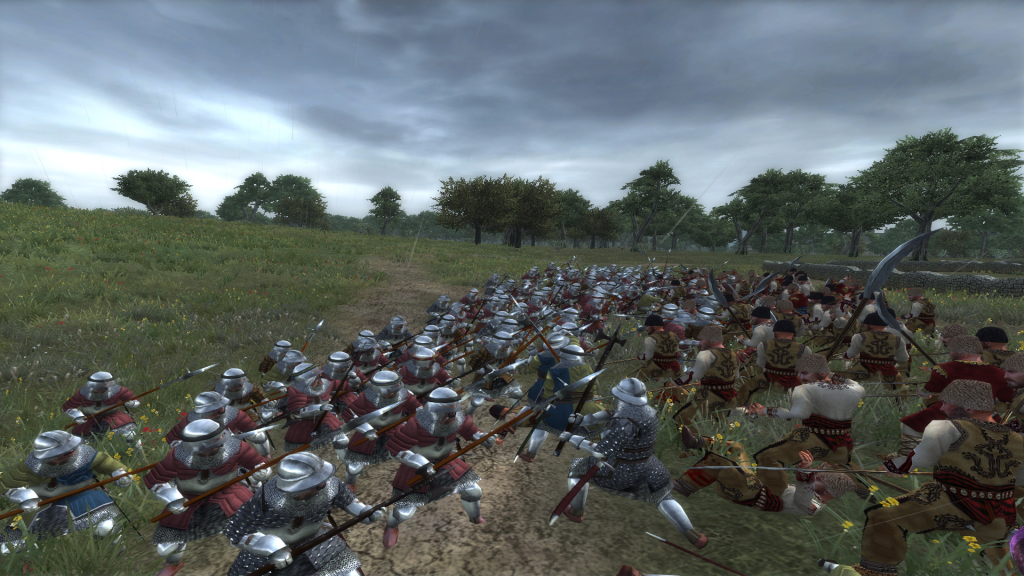

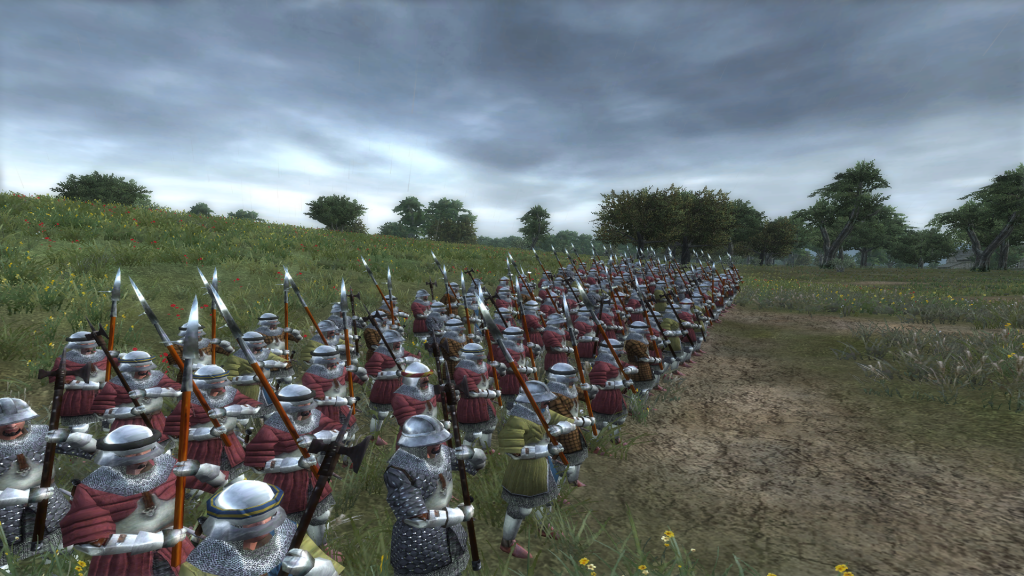


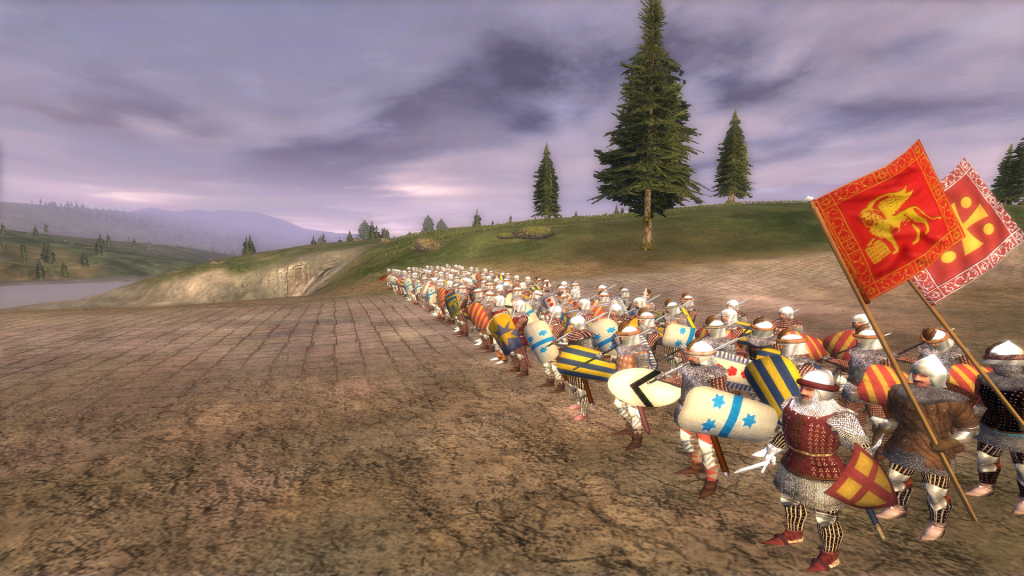
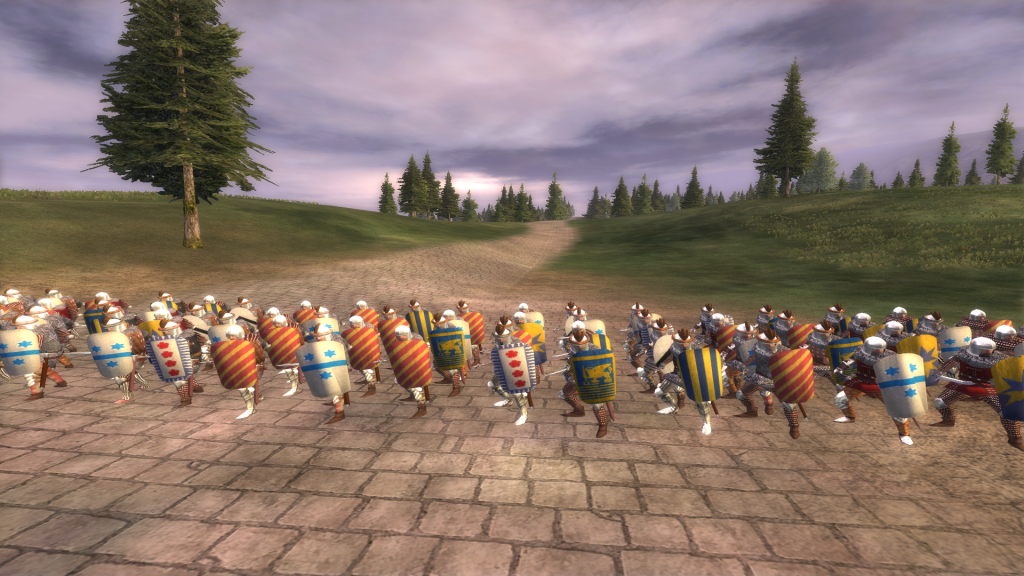

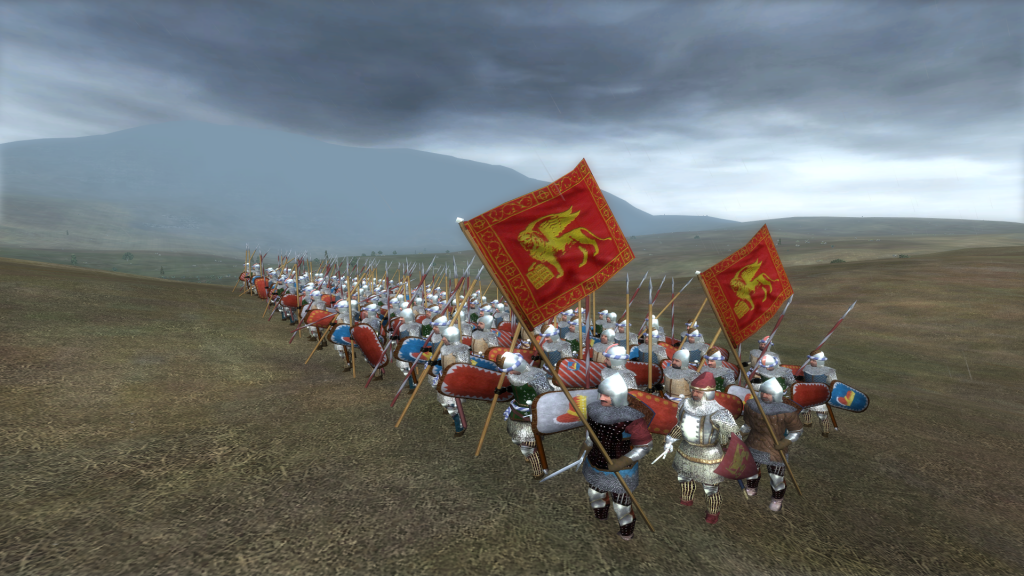
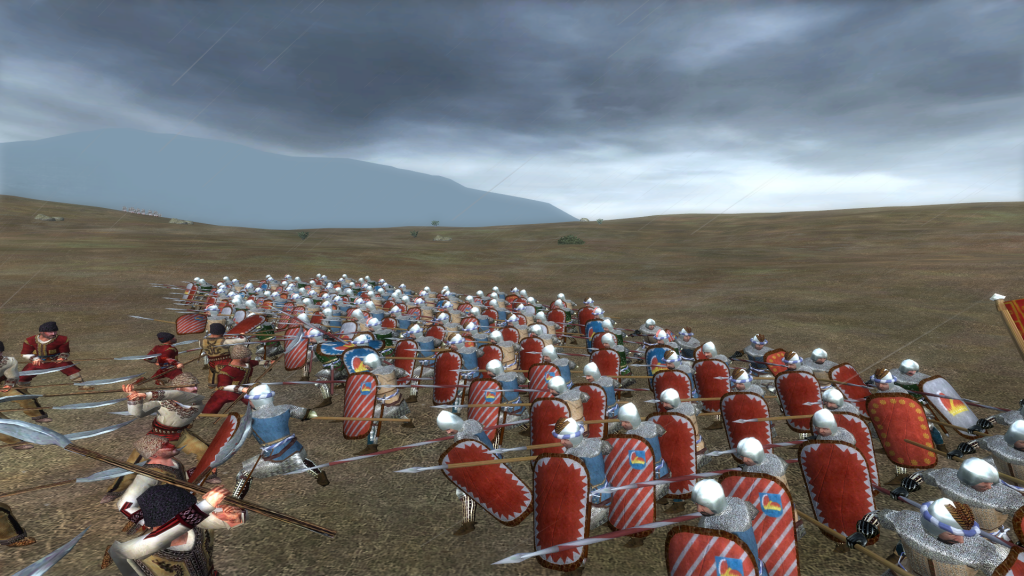


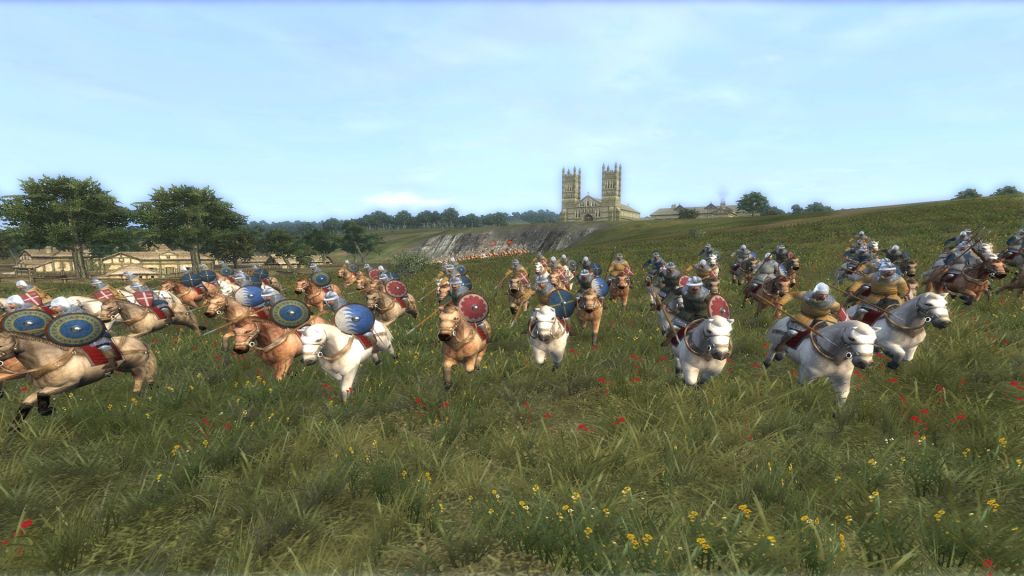



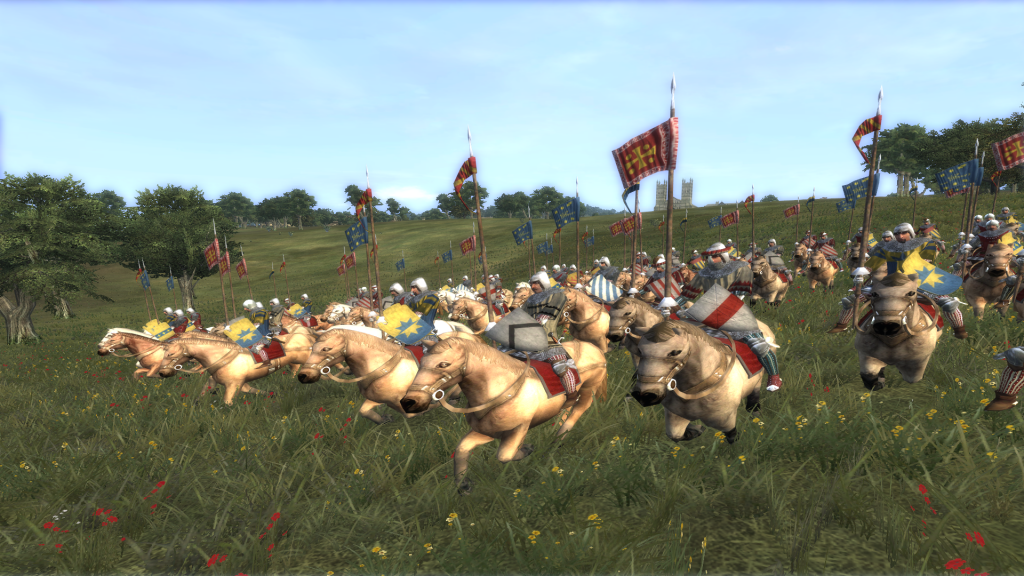
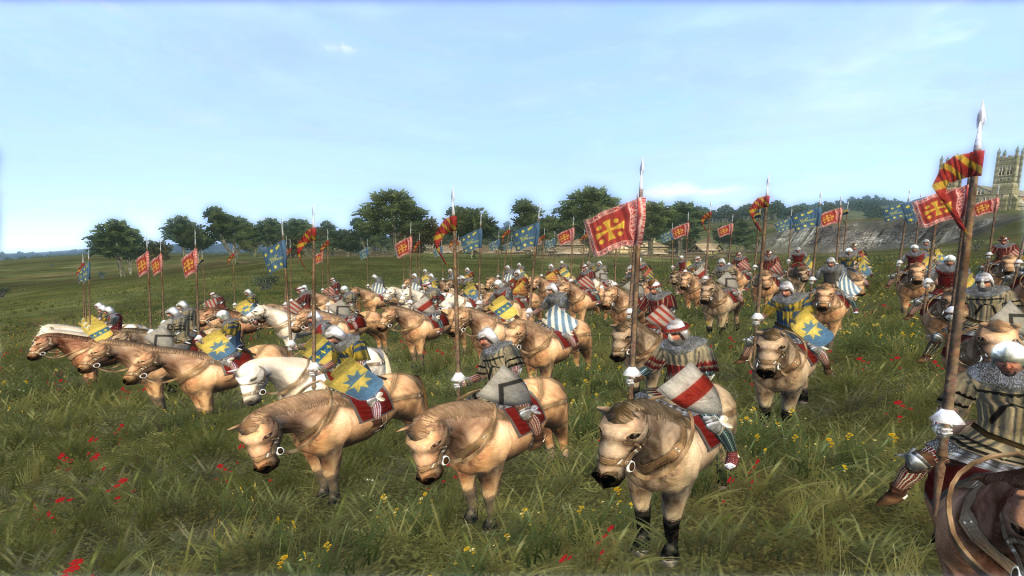



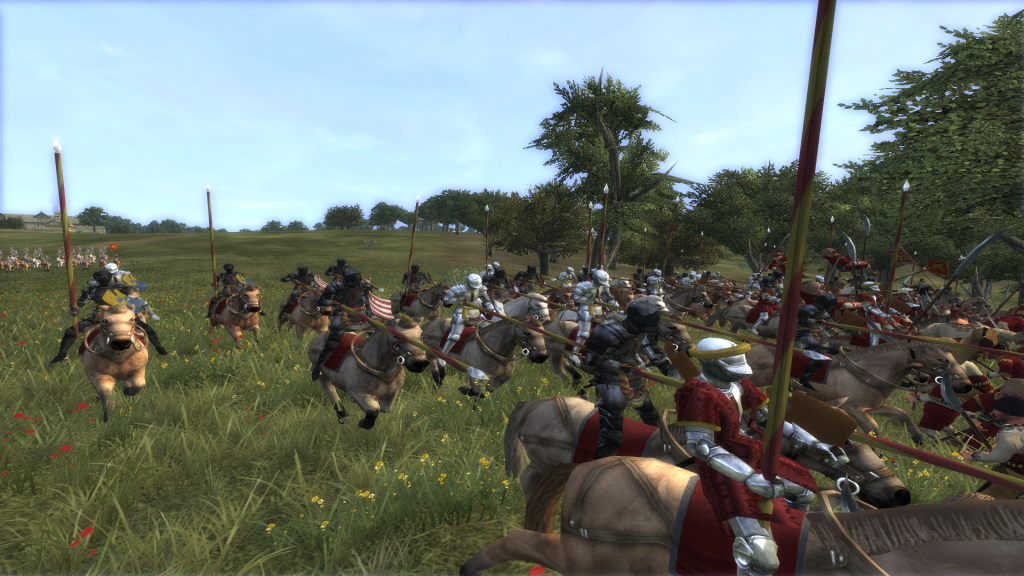
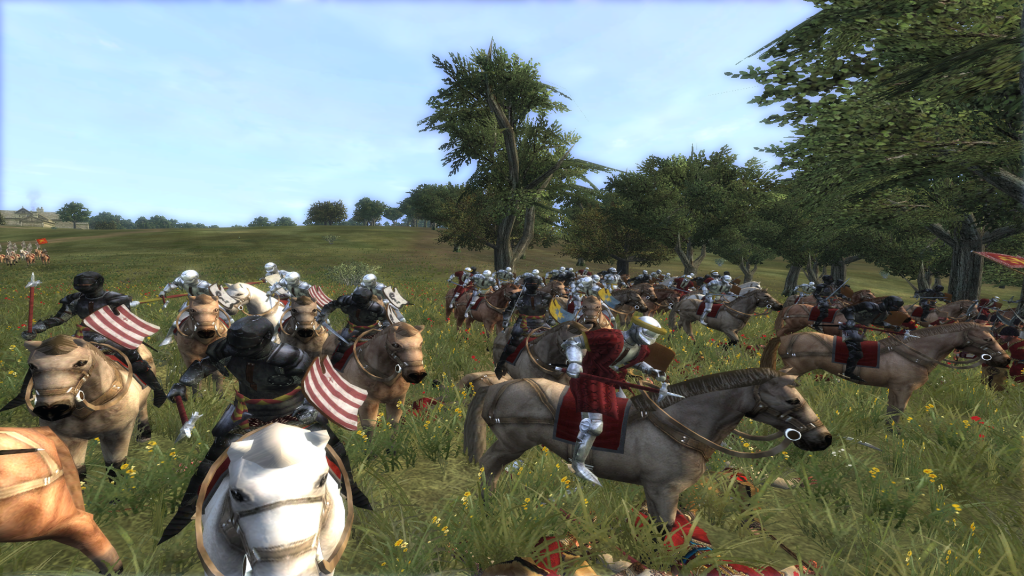
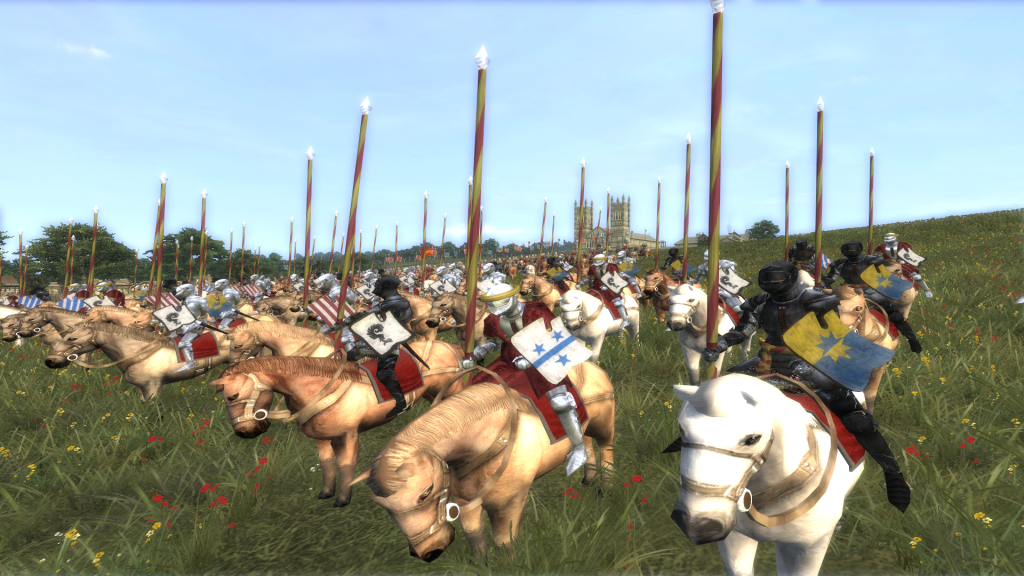


 Reply With Quote
Reply With Quote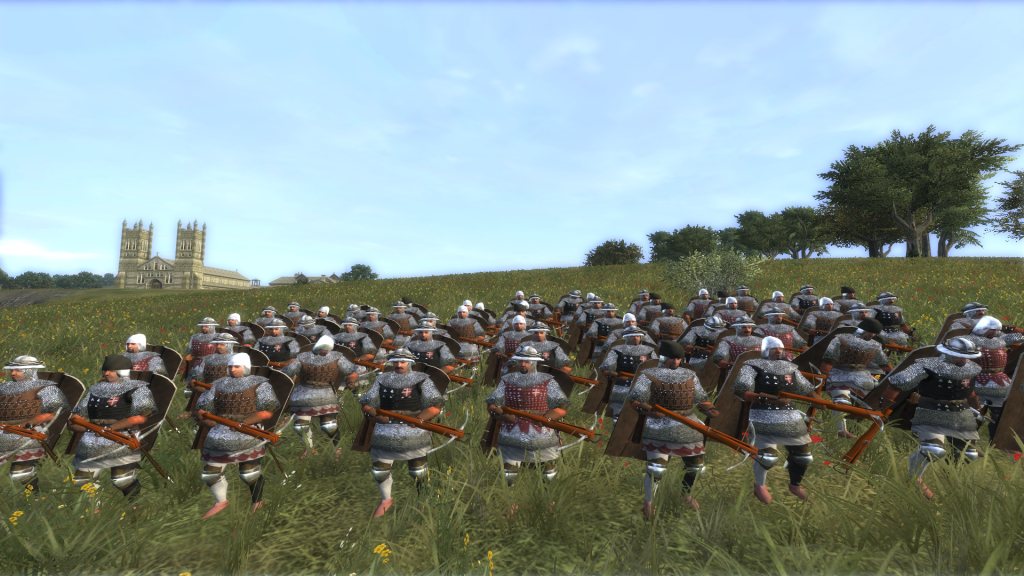

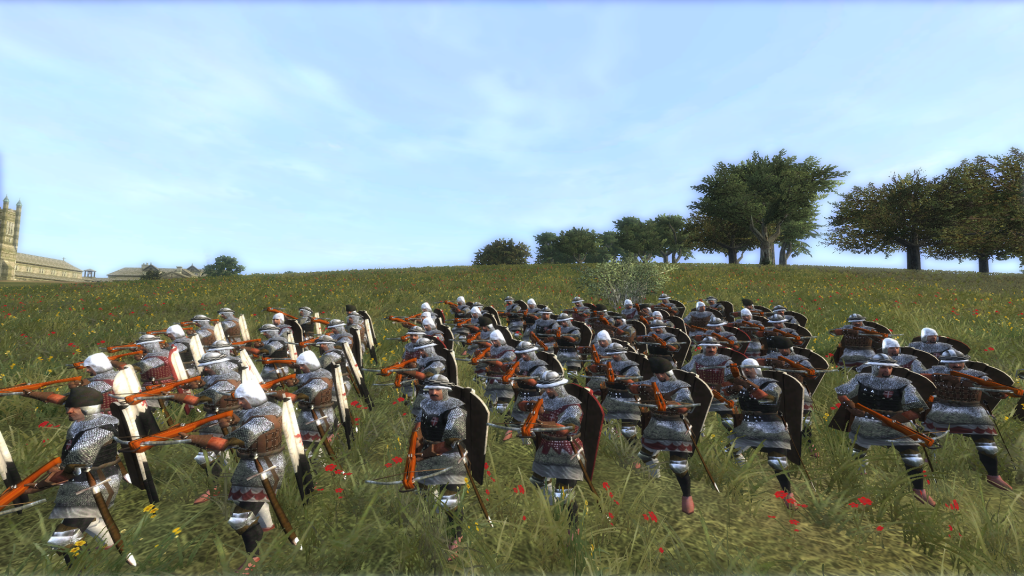

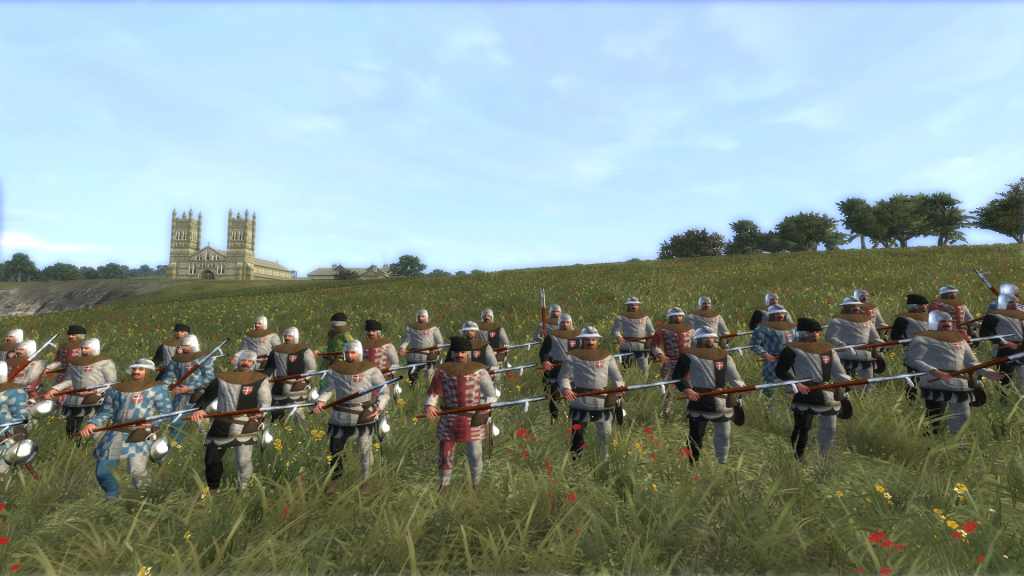

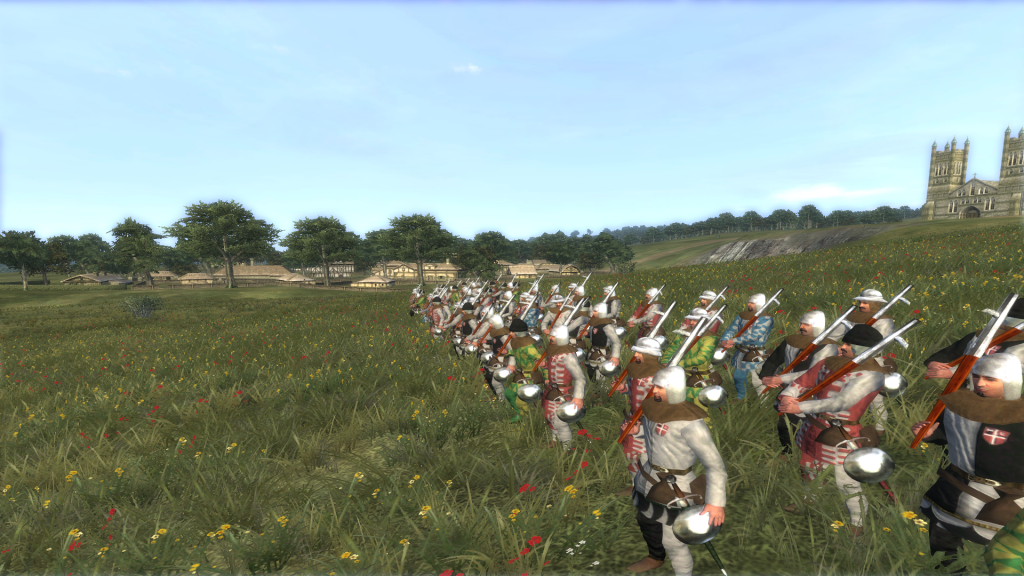
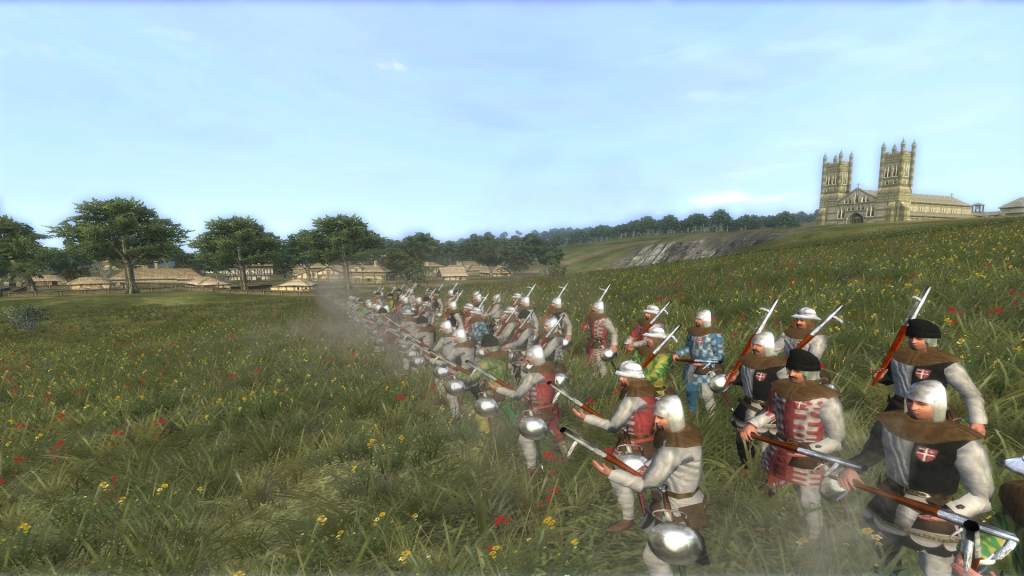
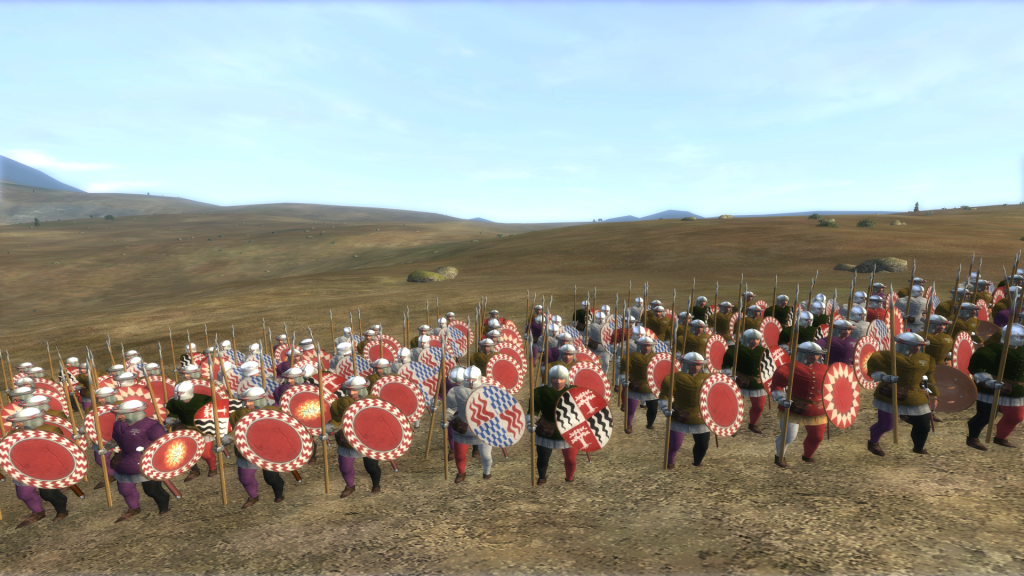 Click here for more images
Click here for more images